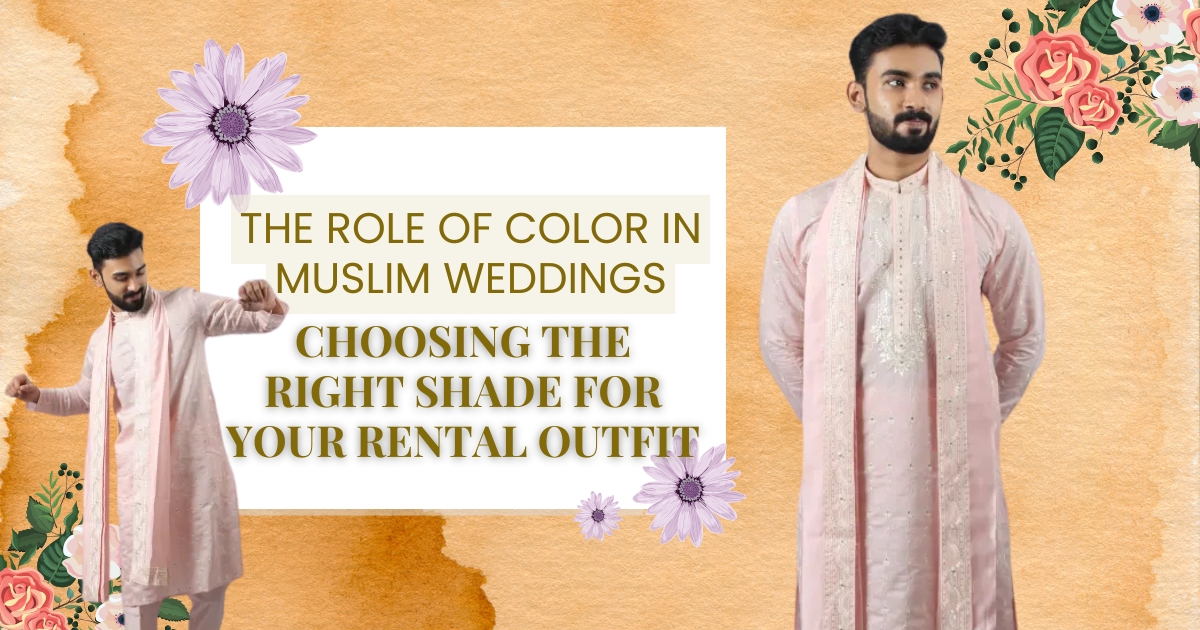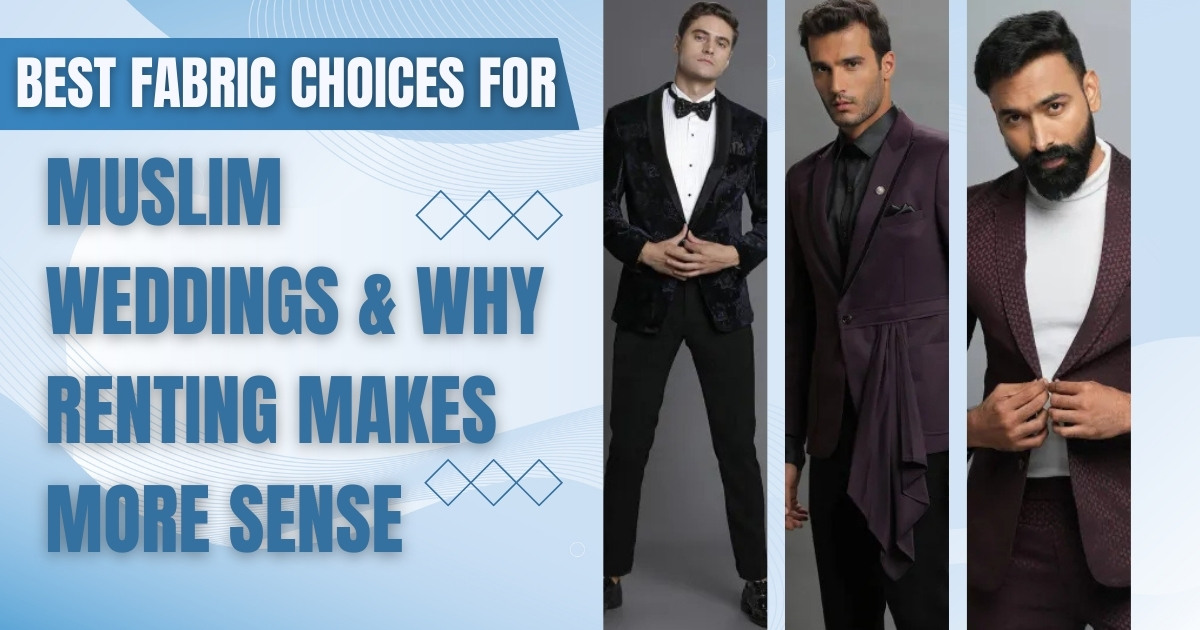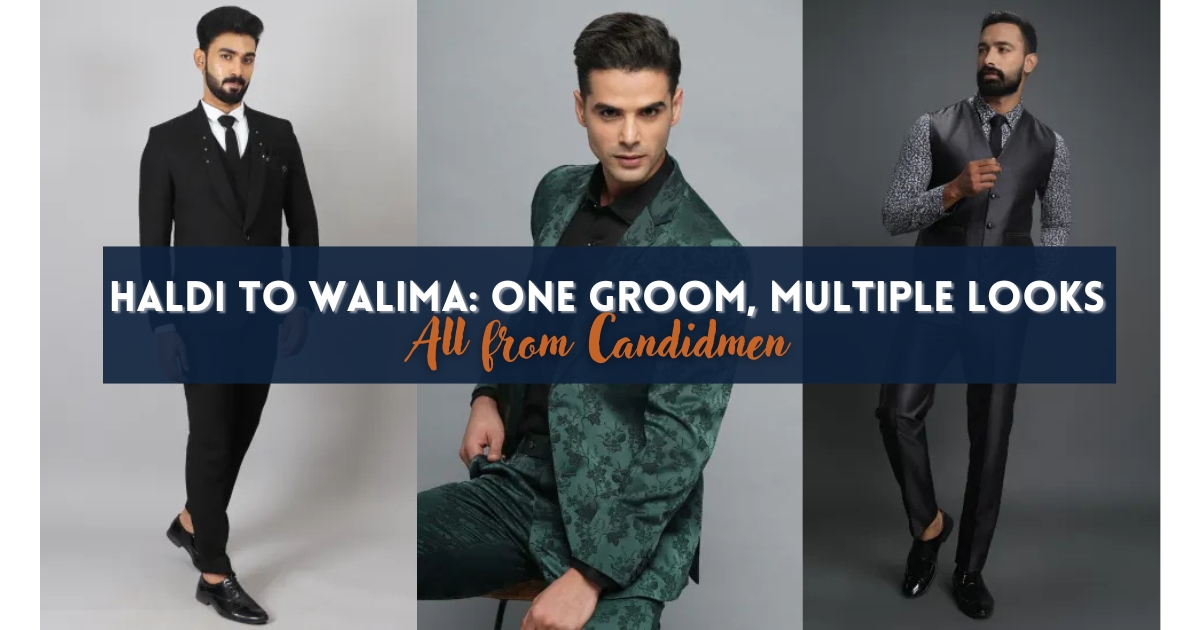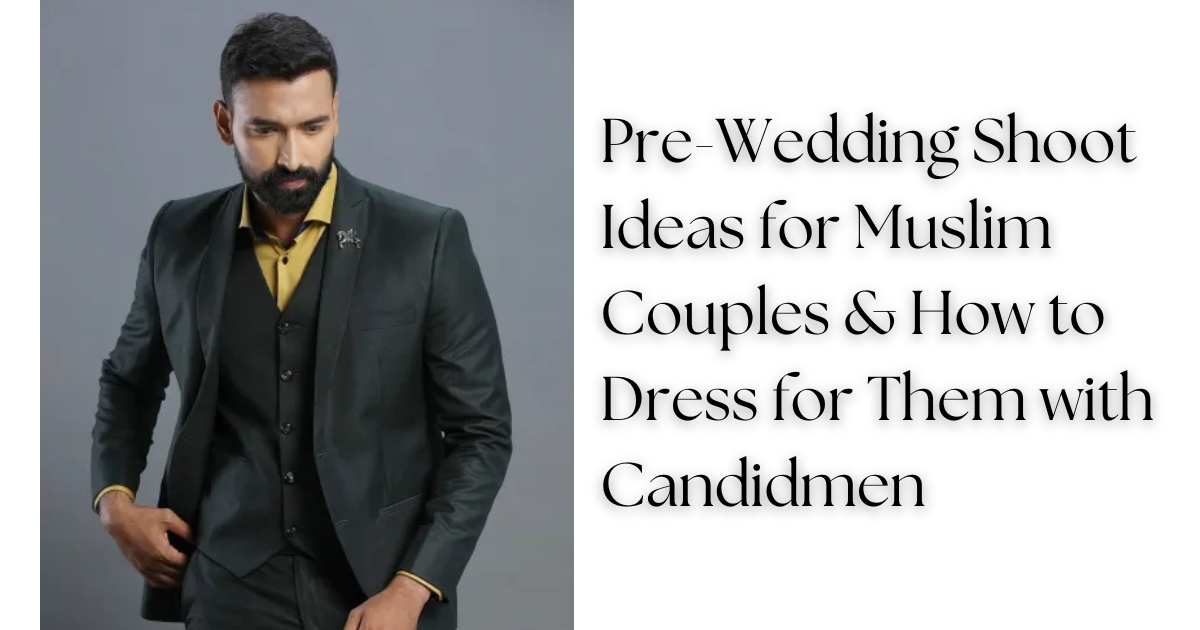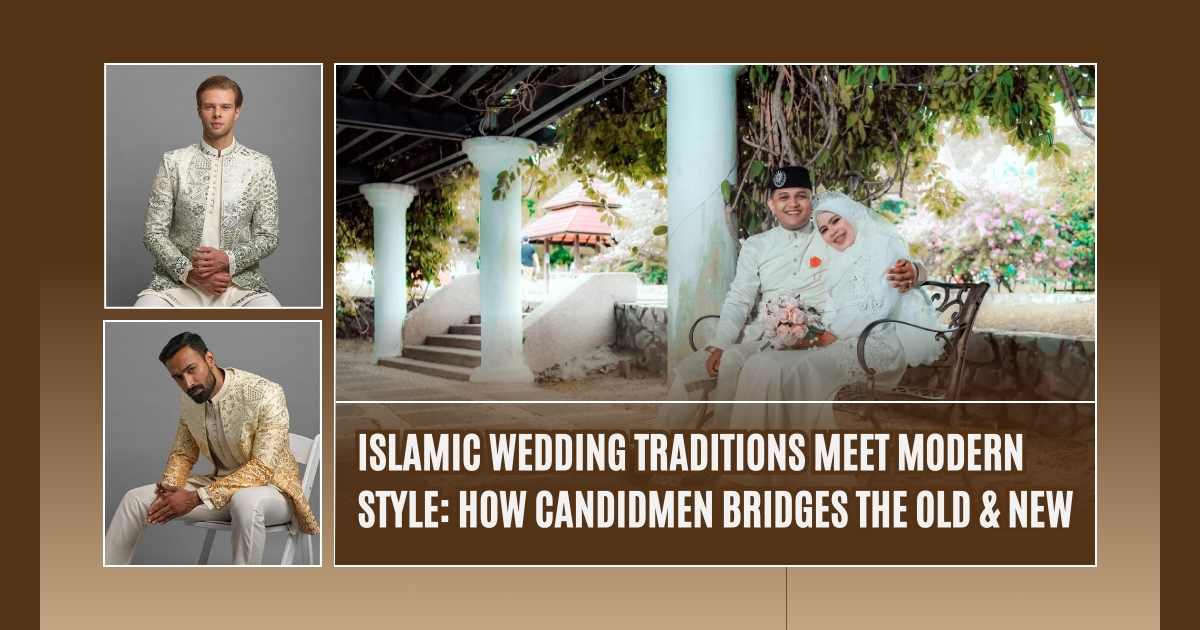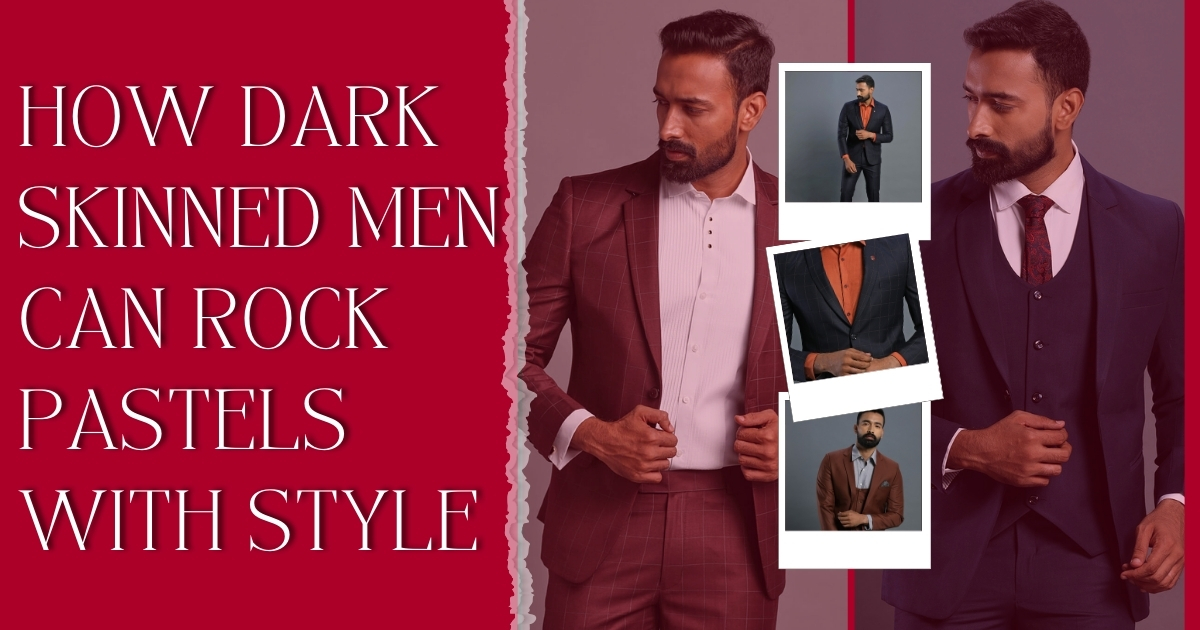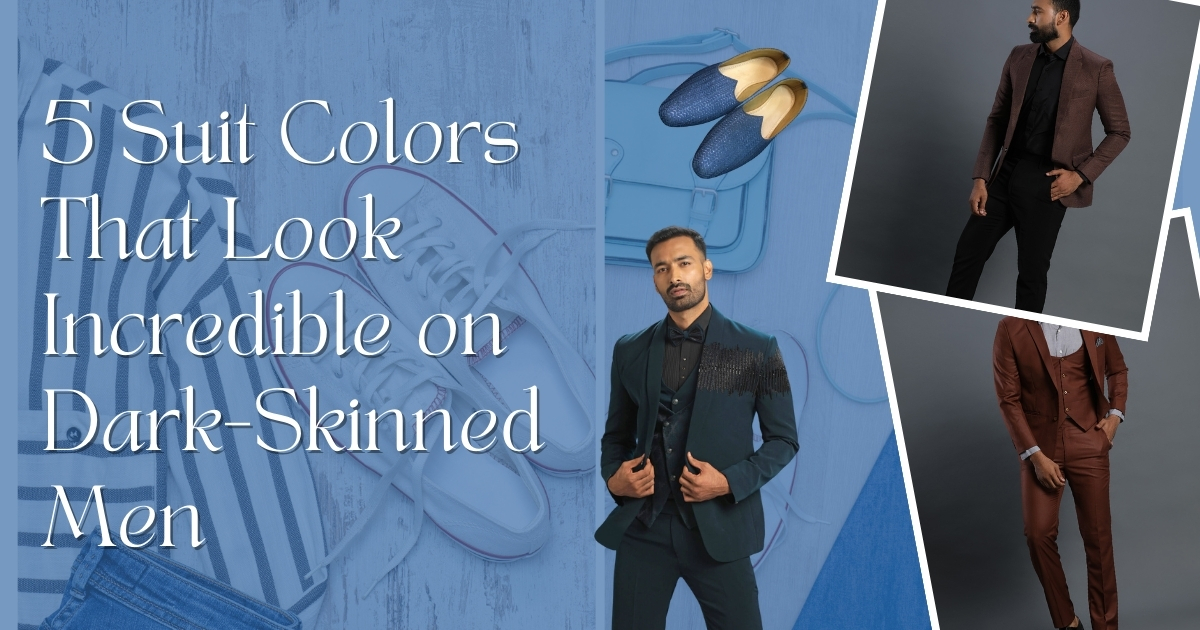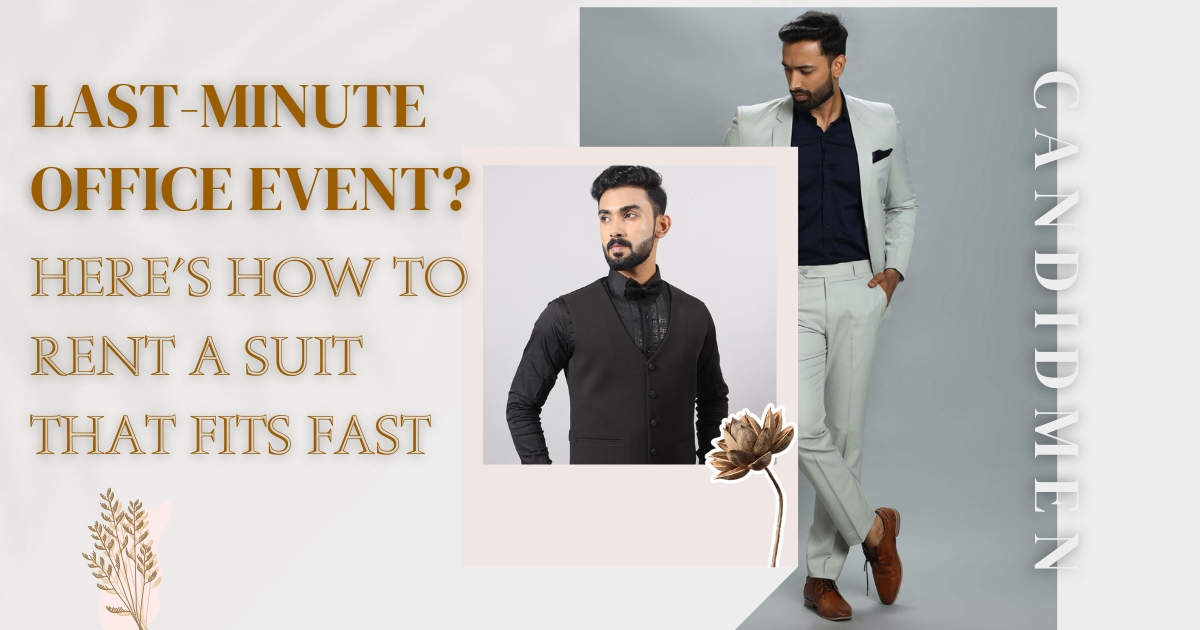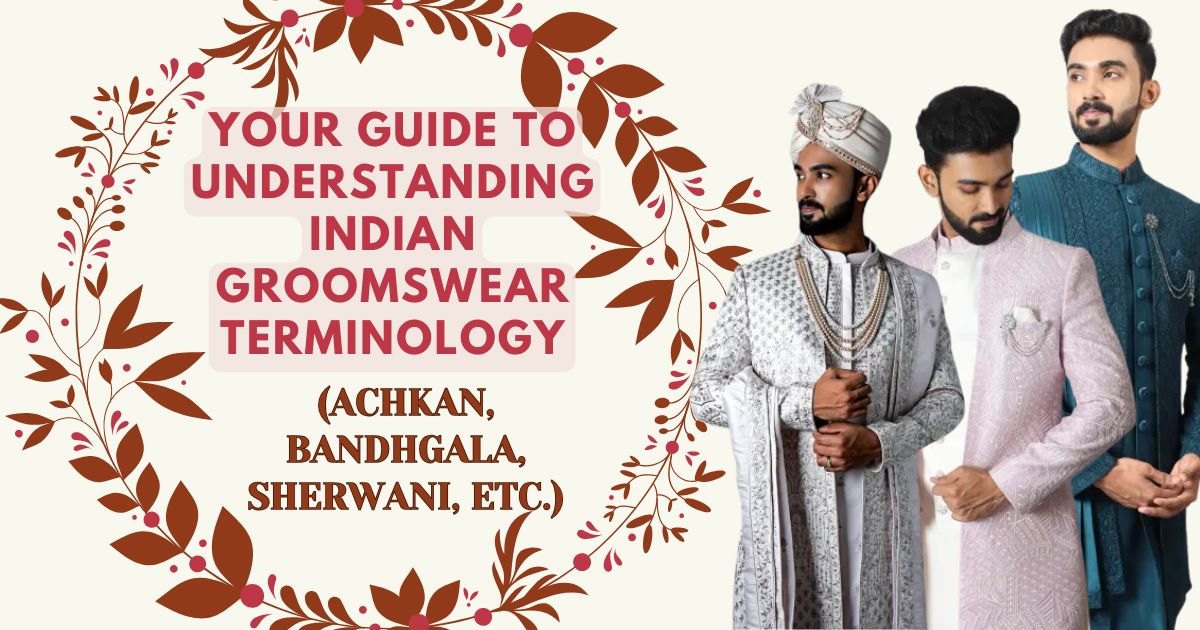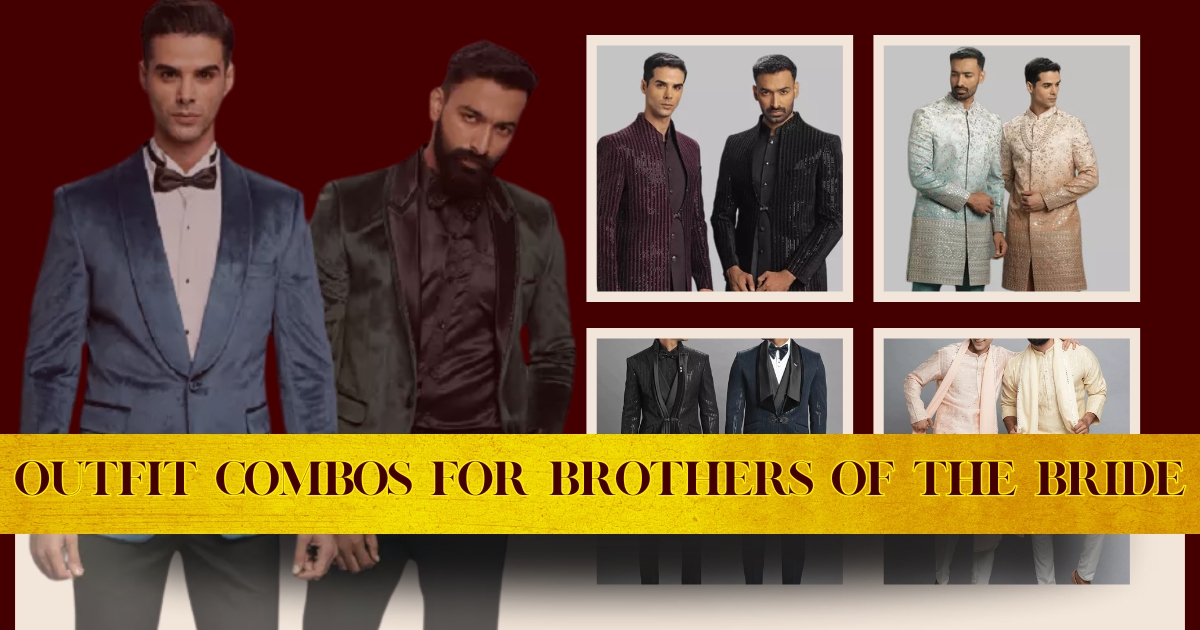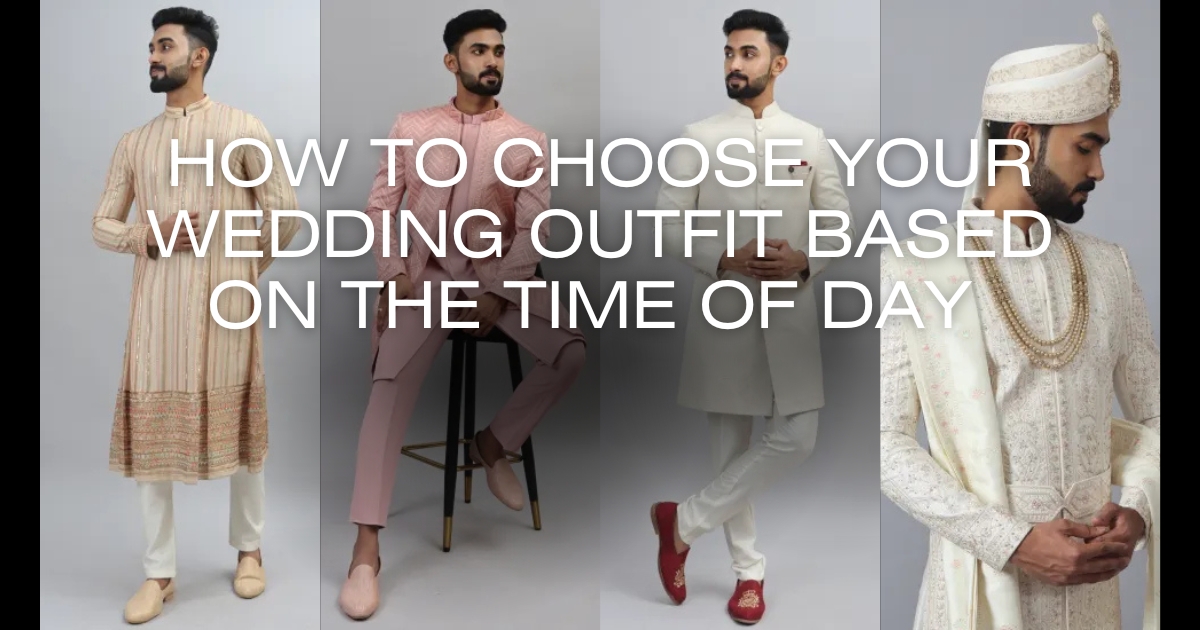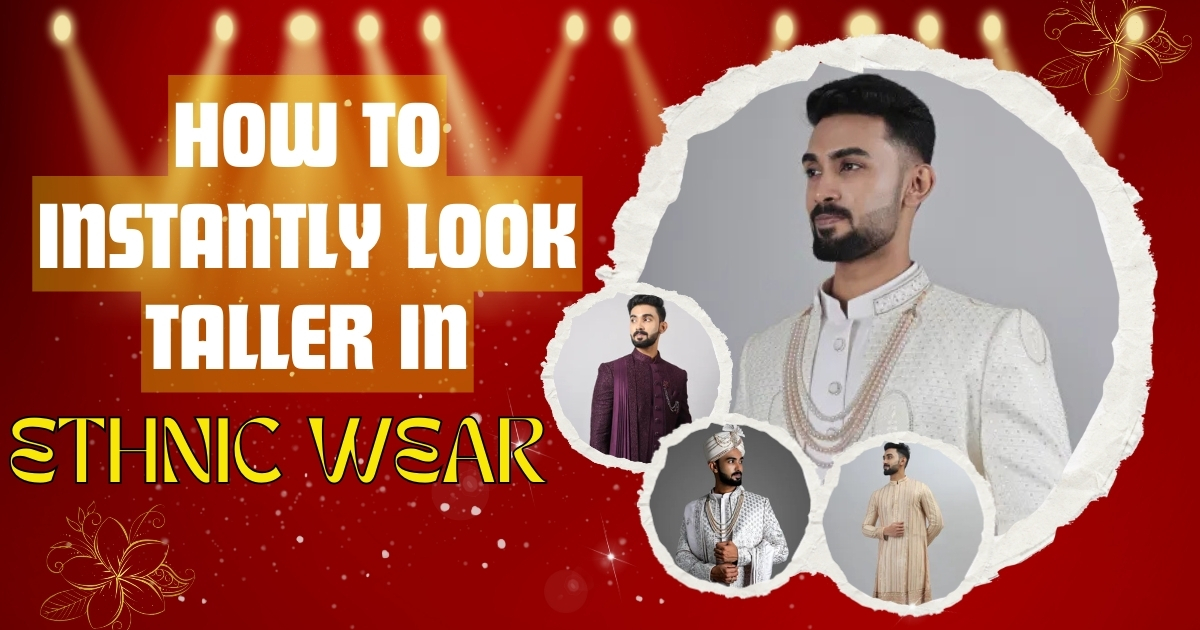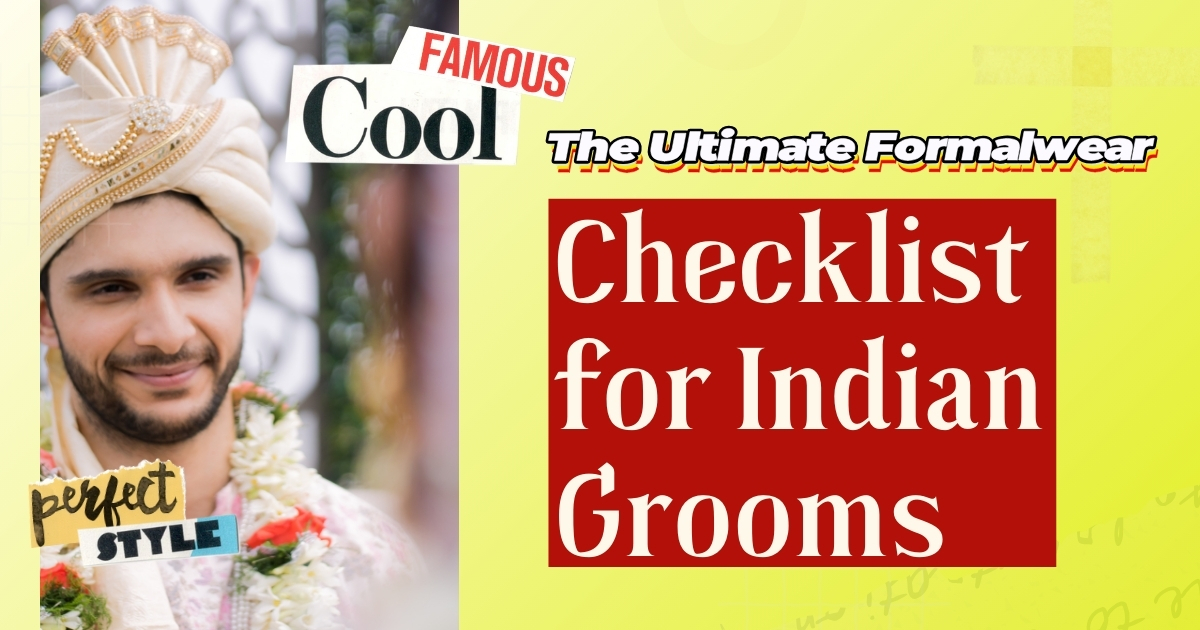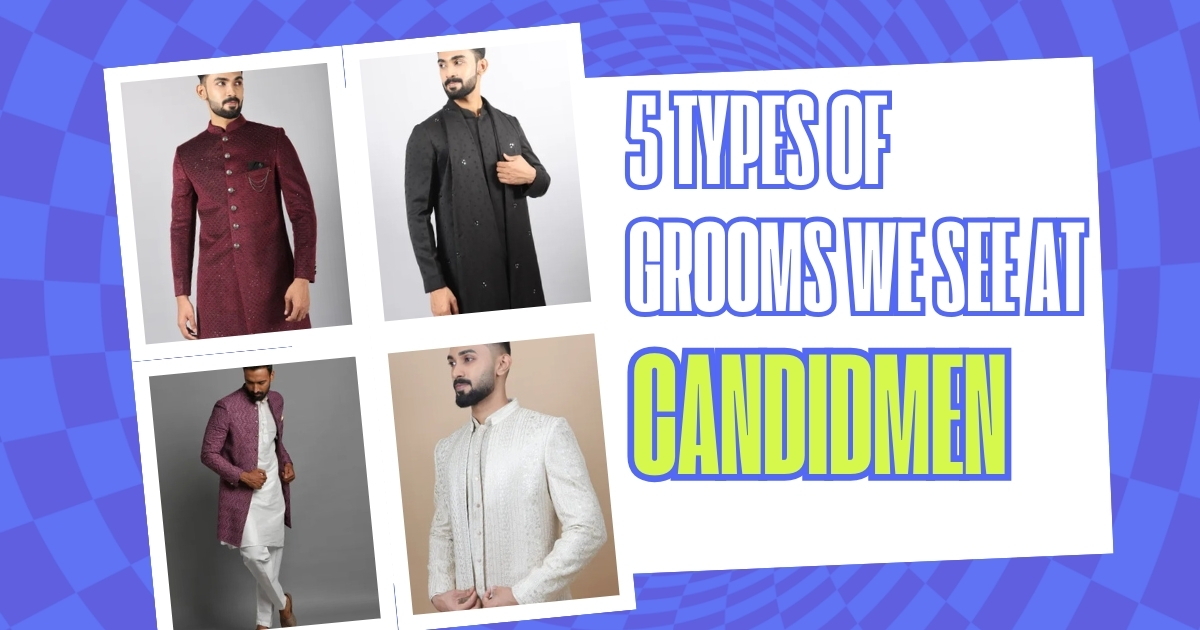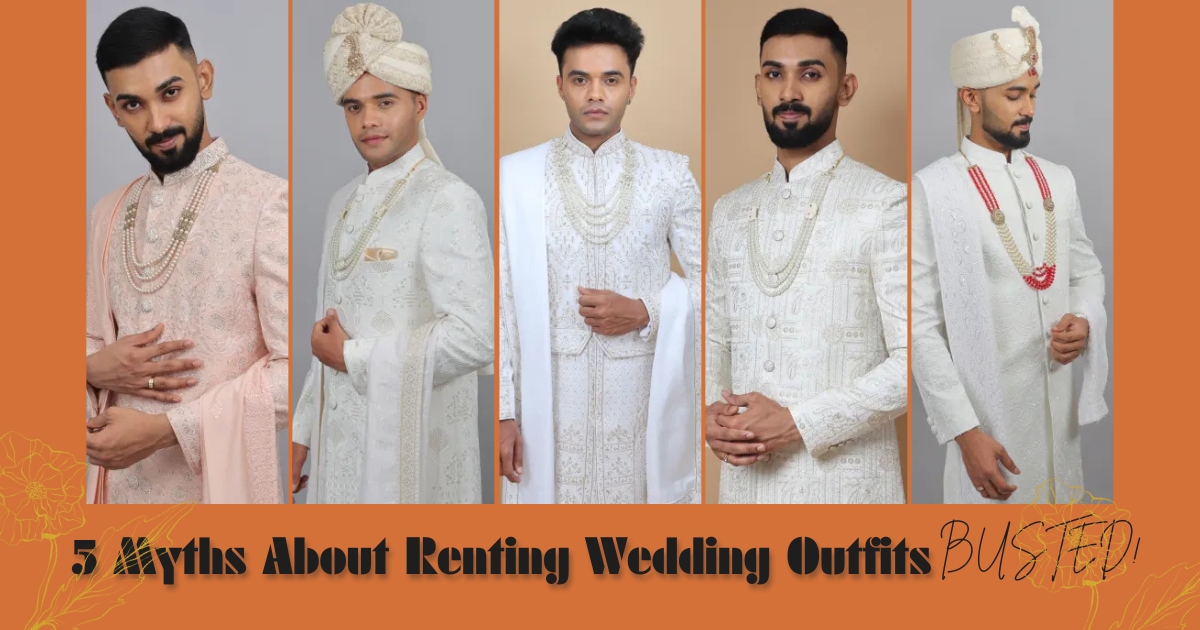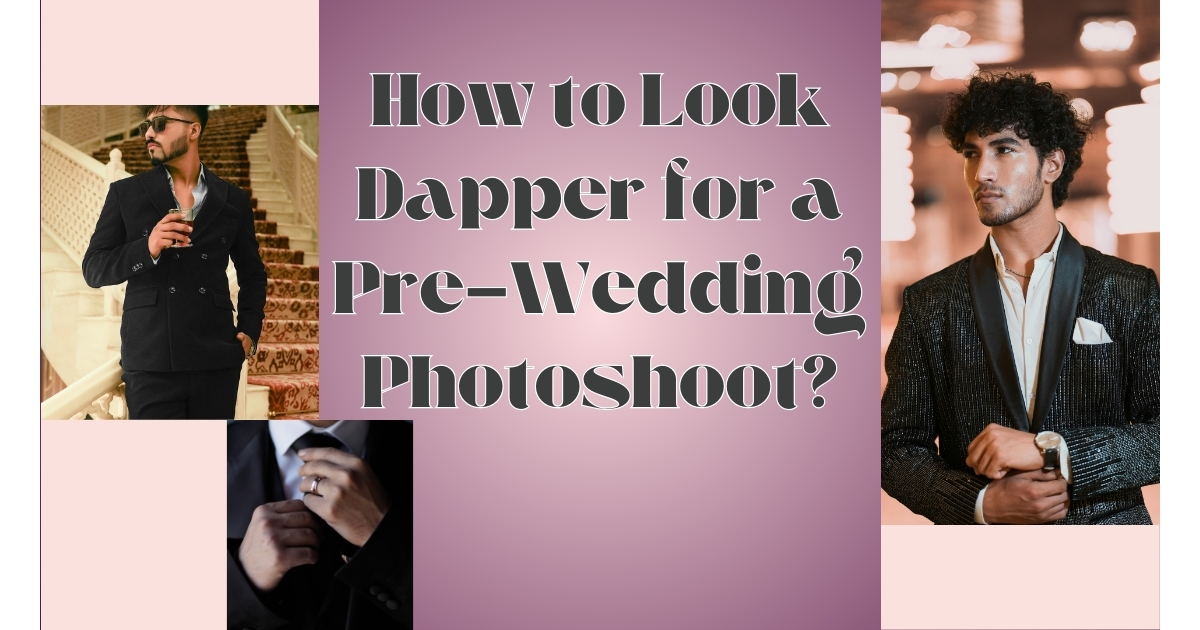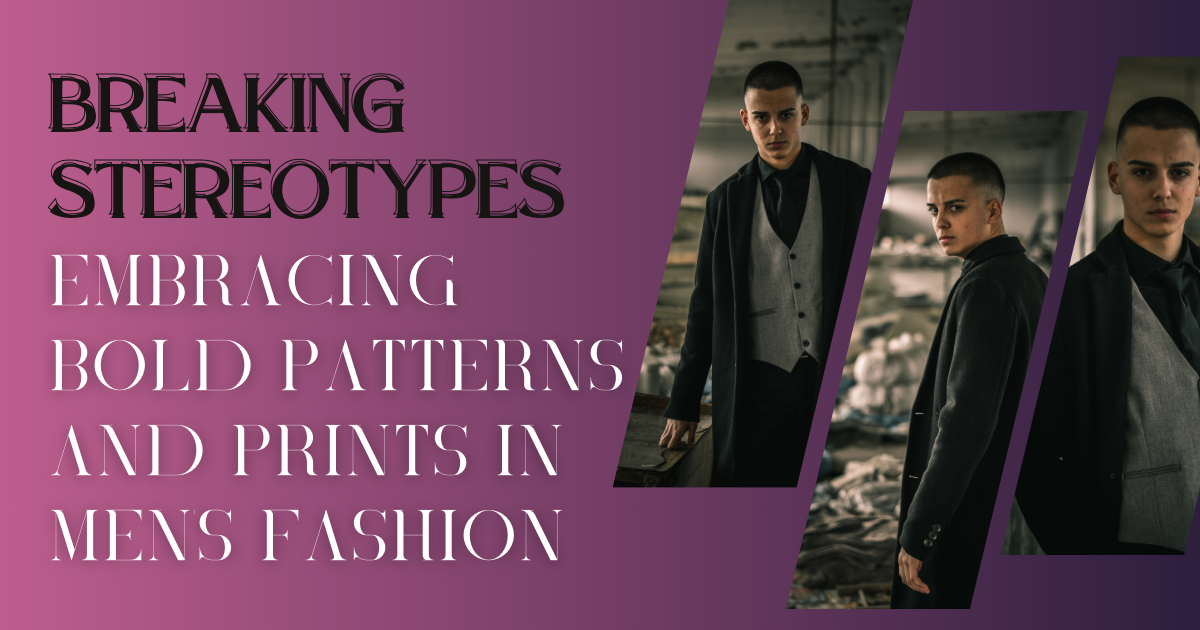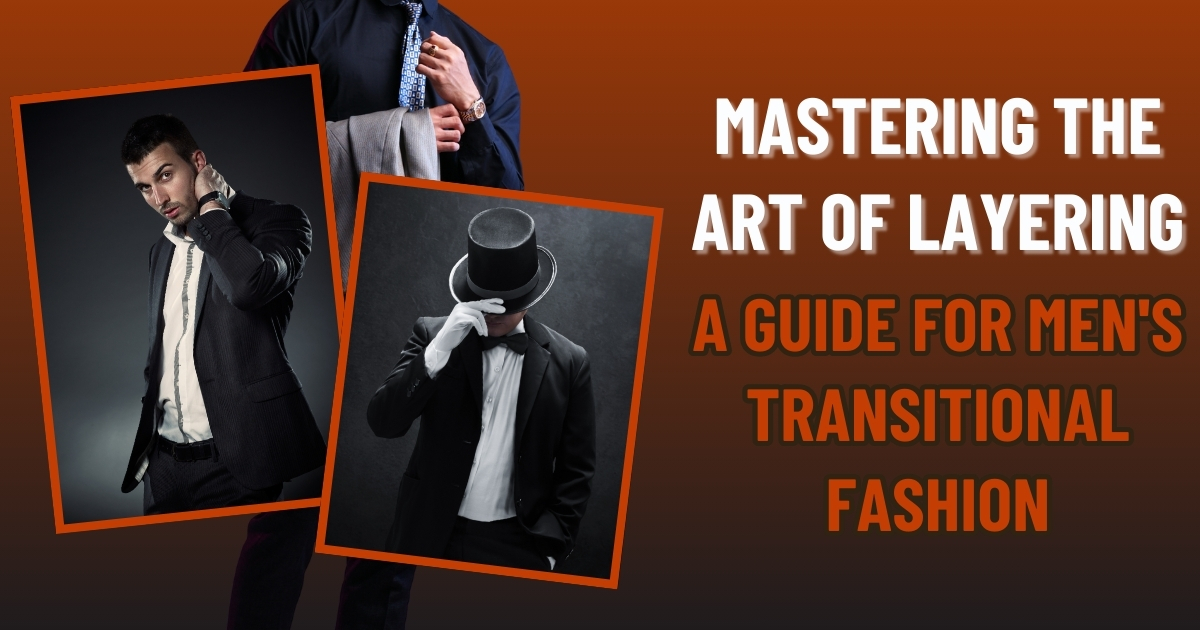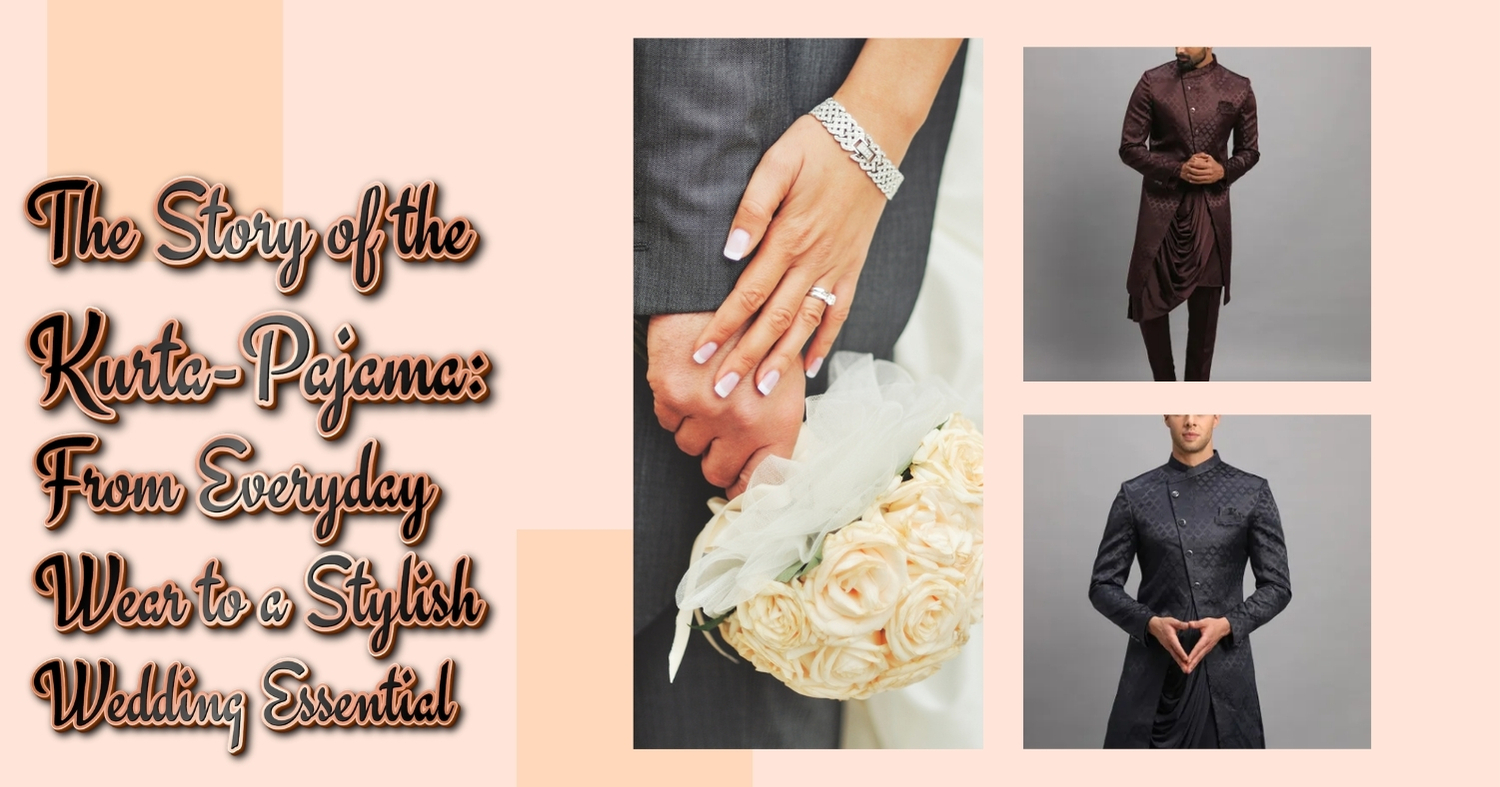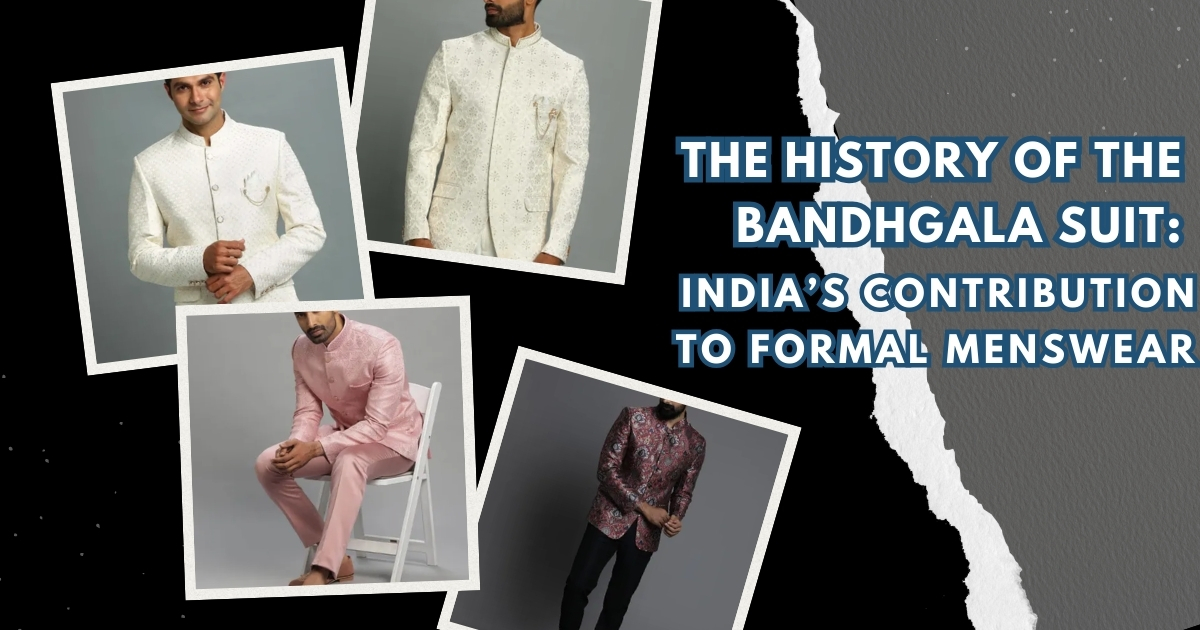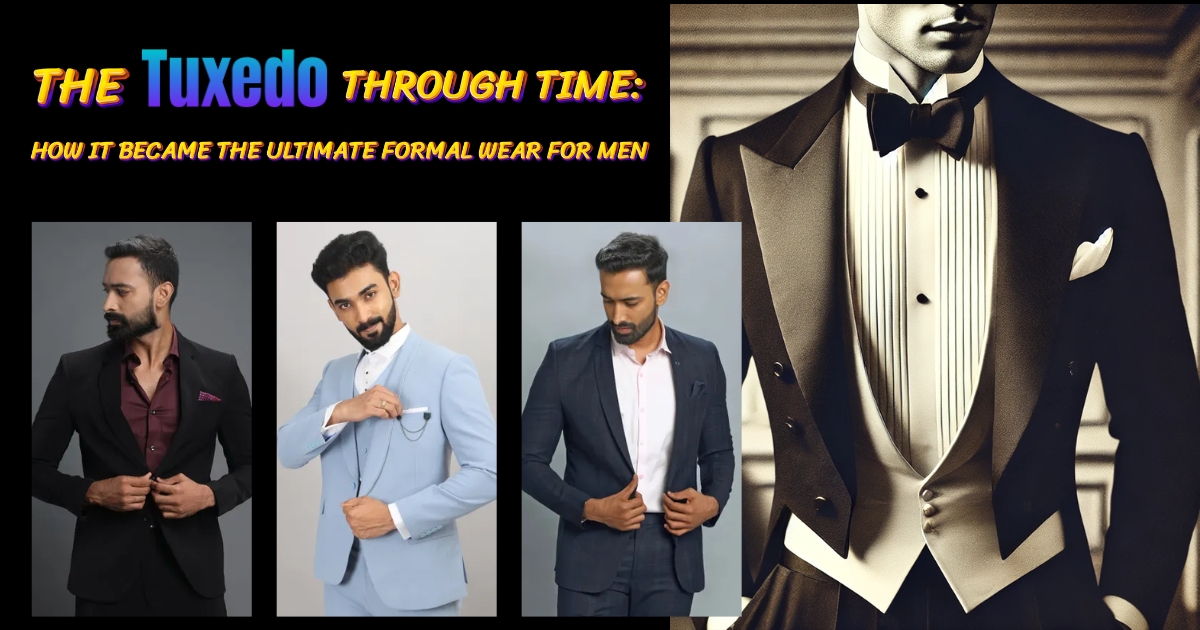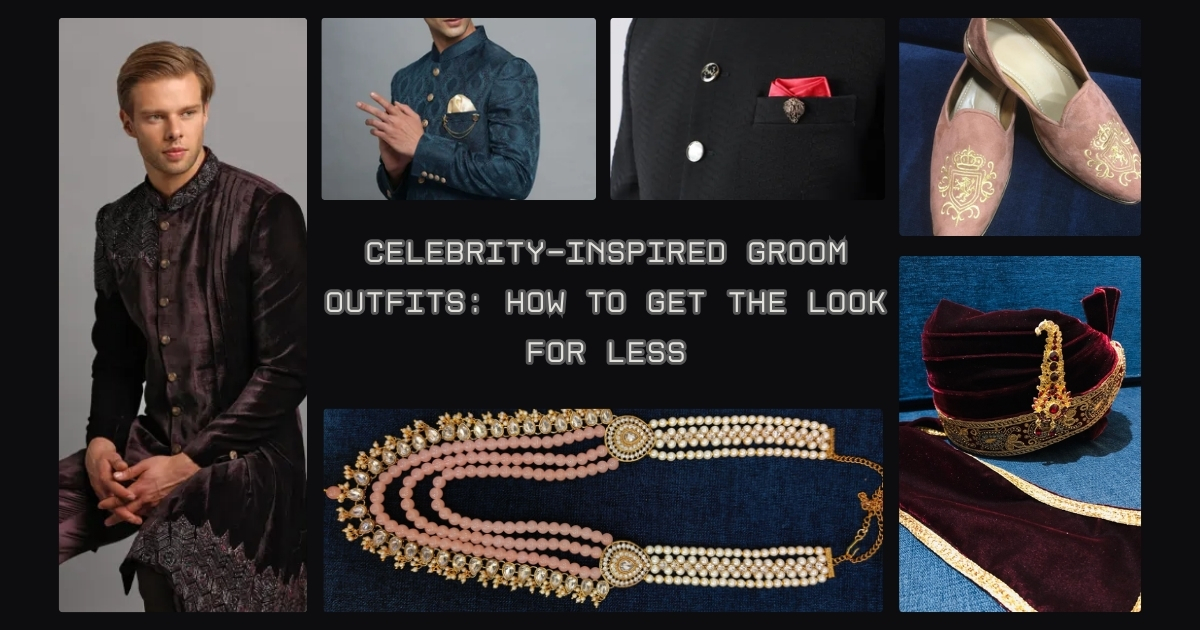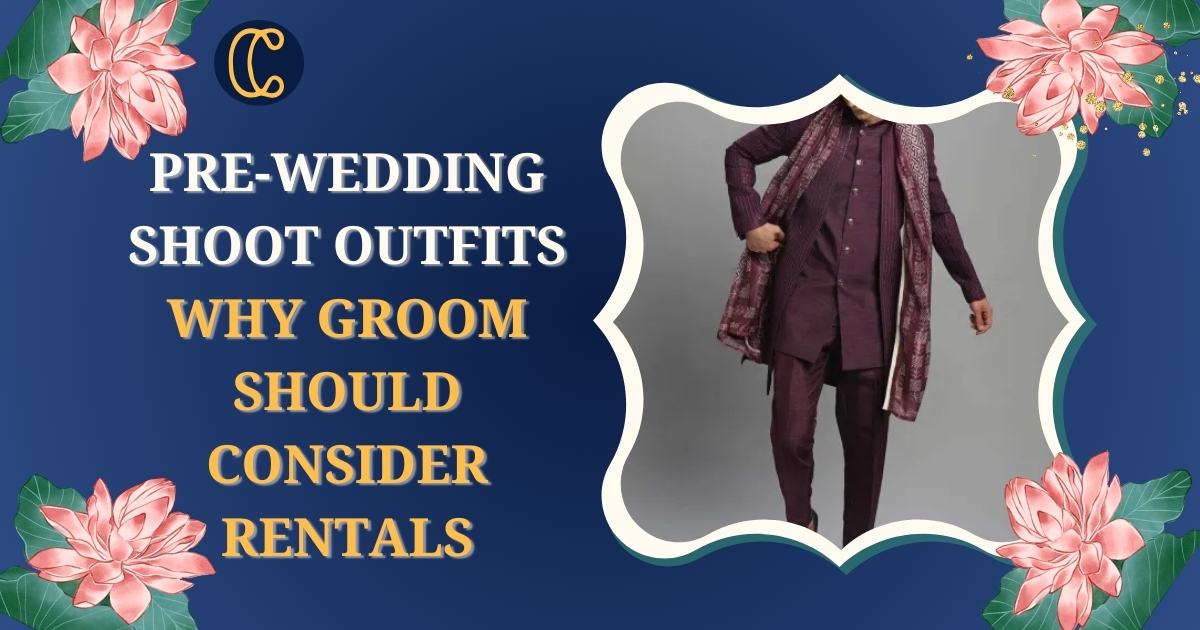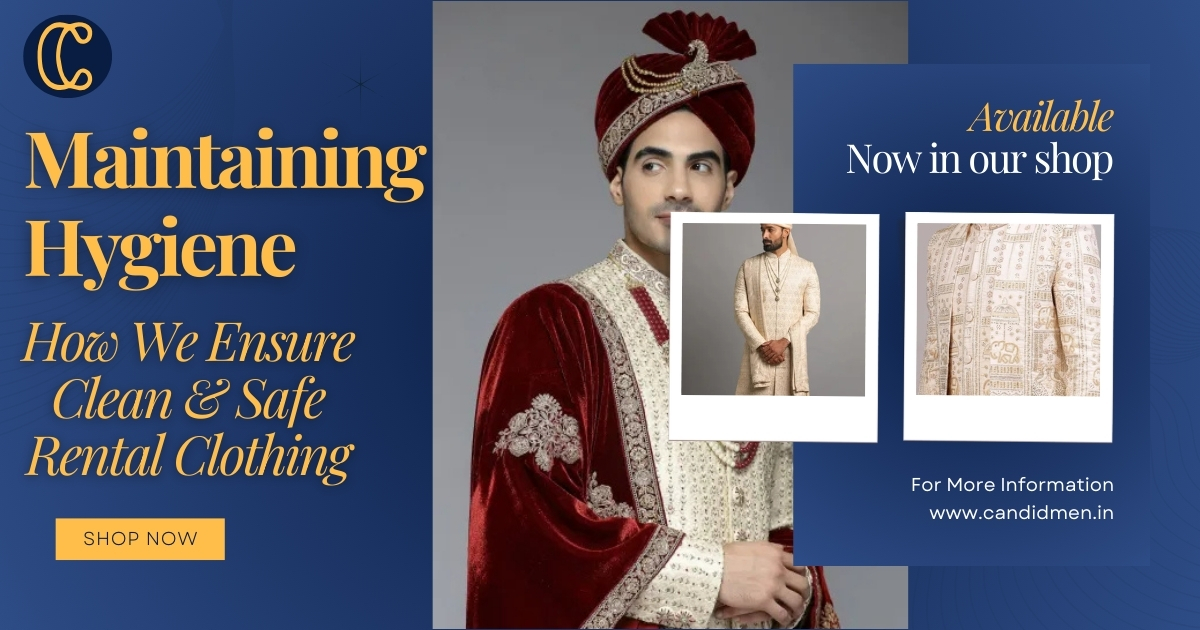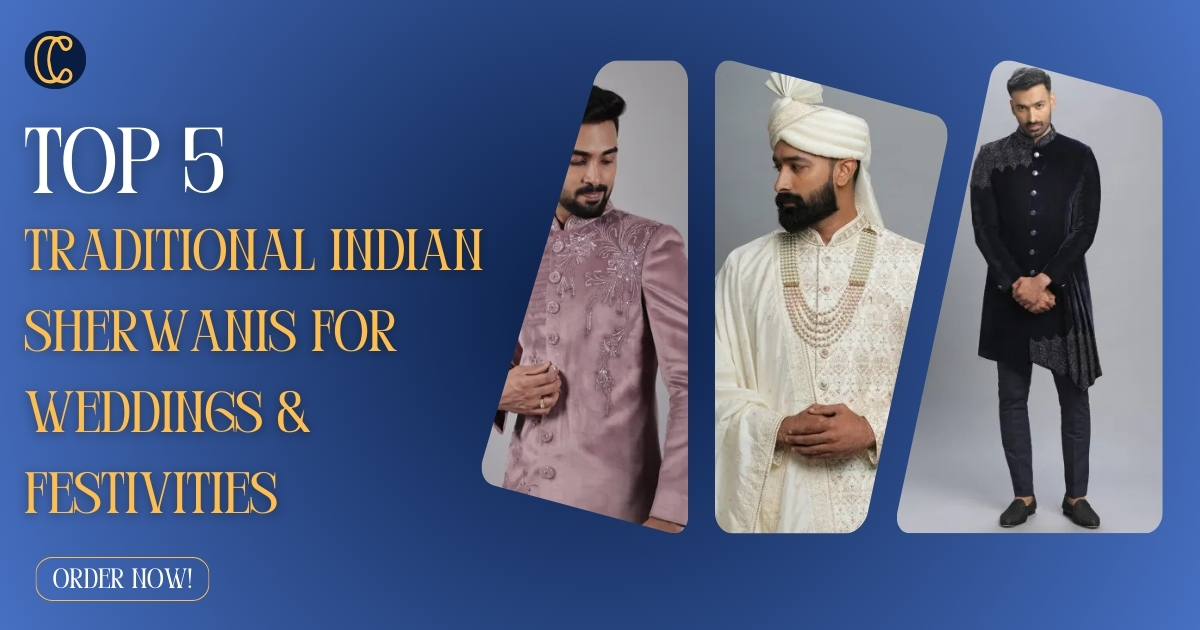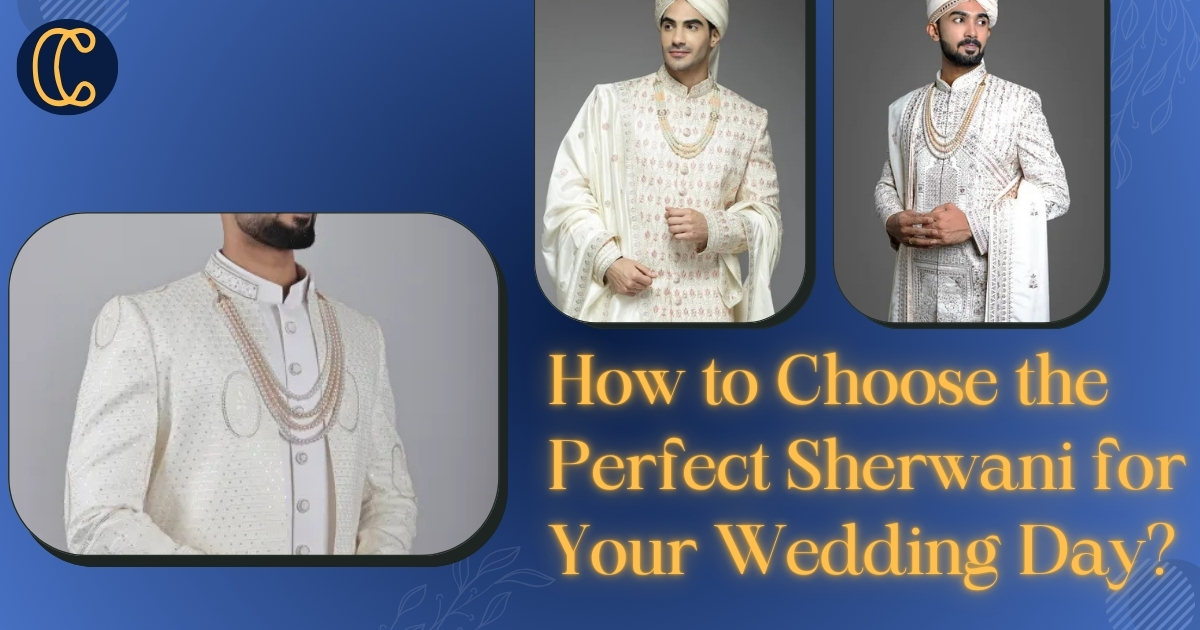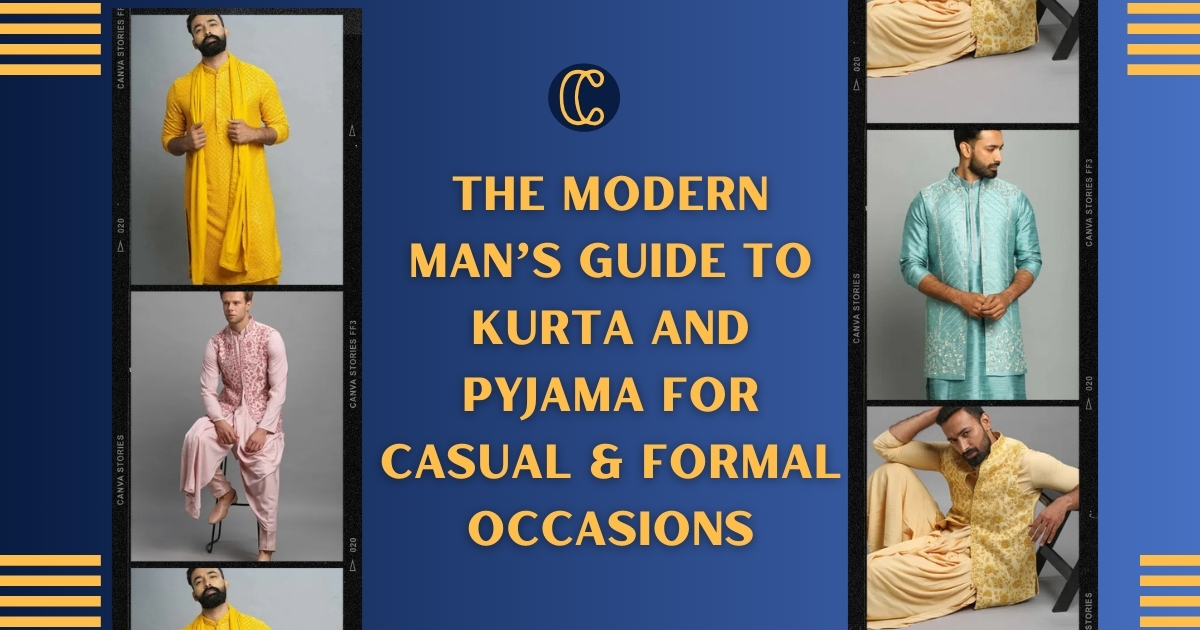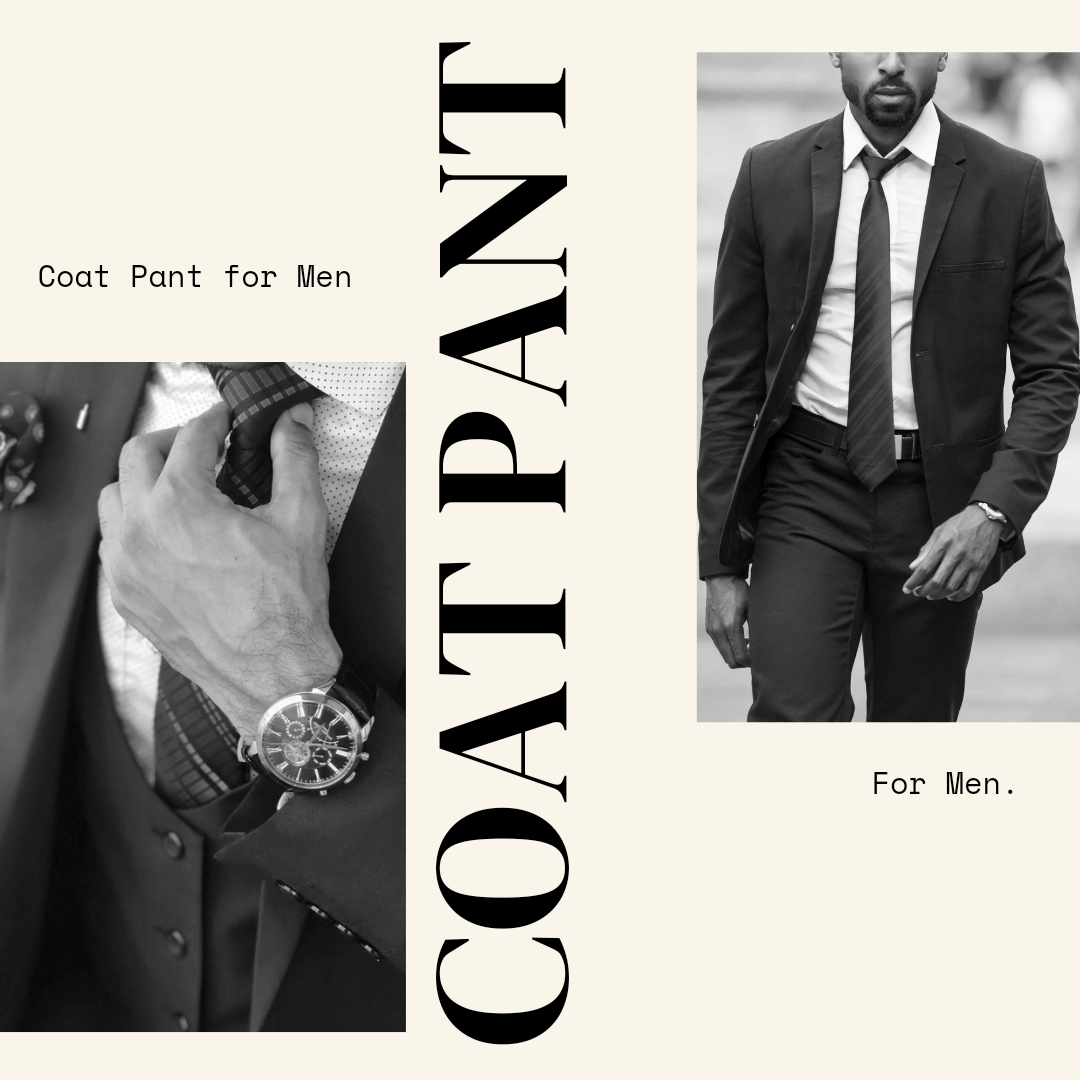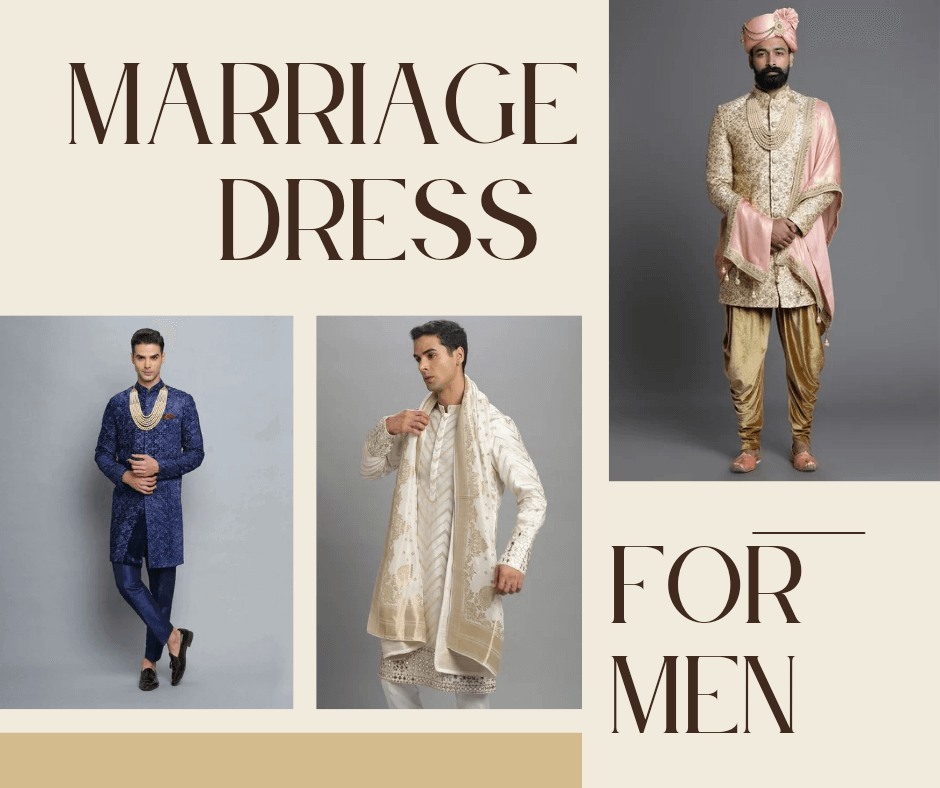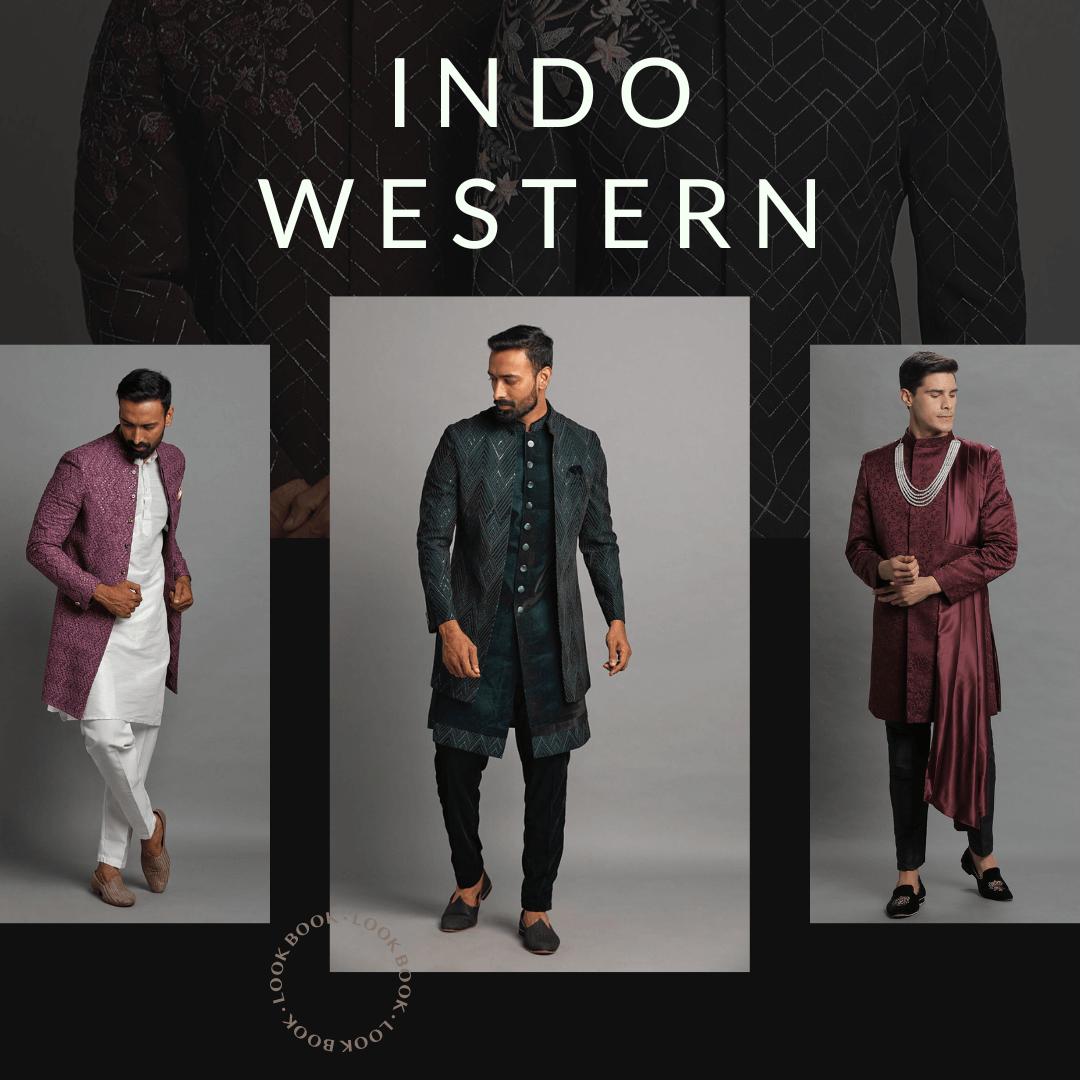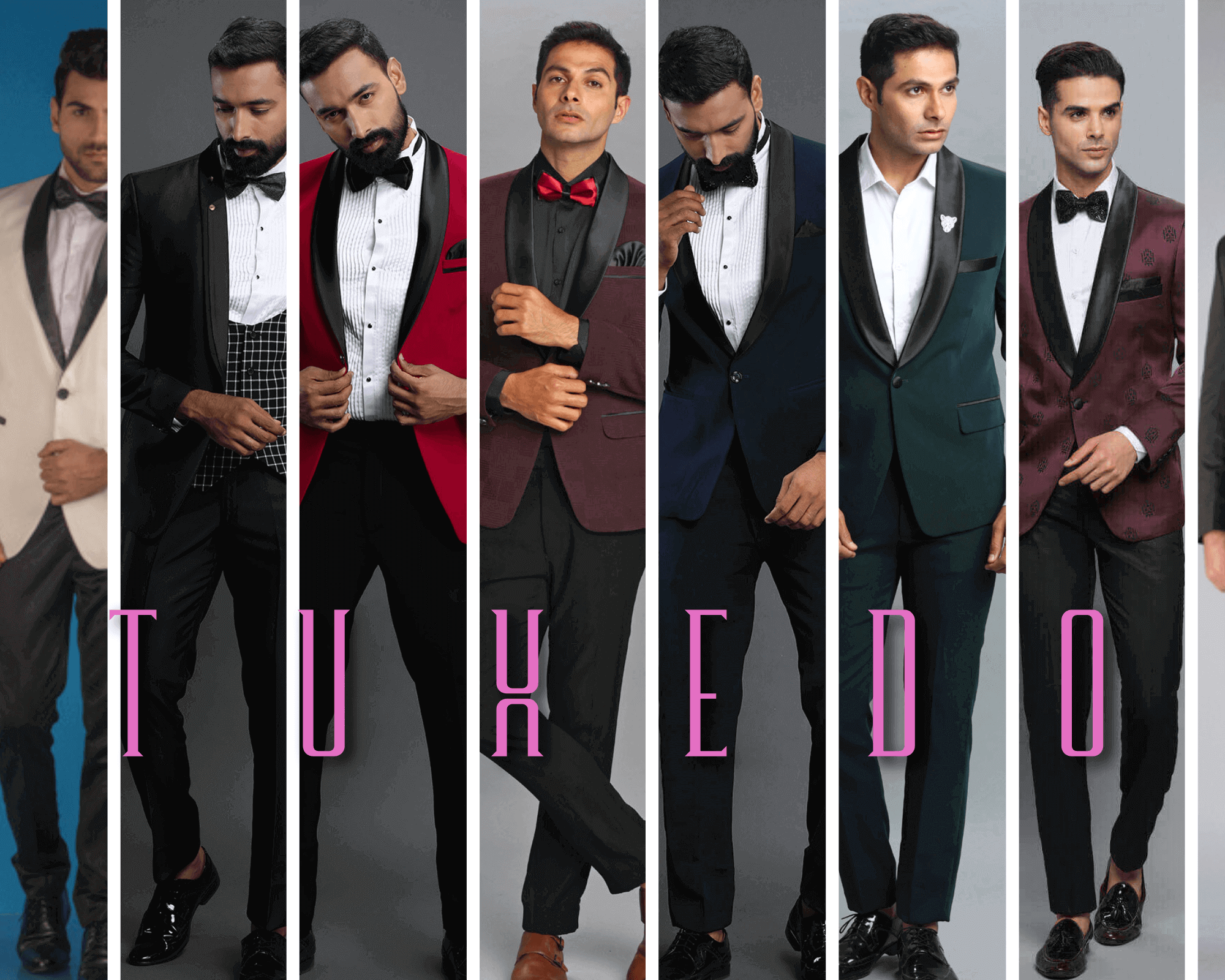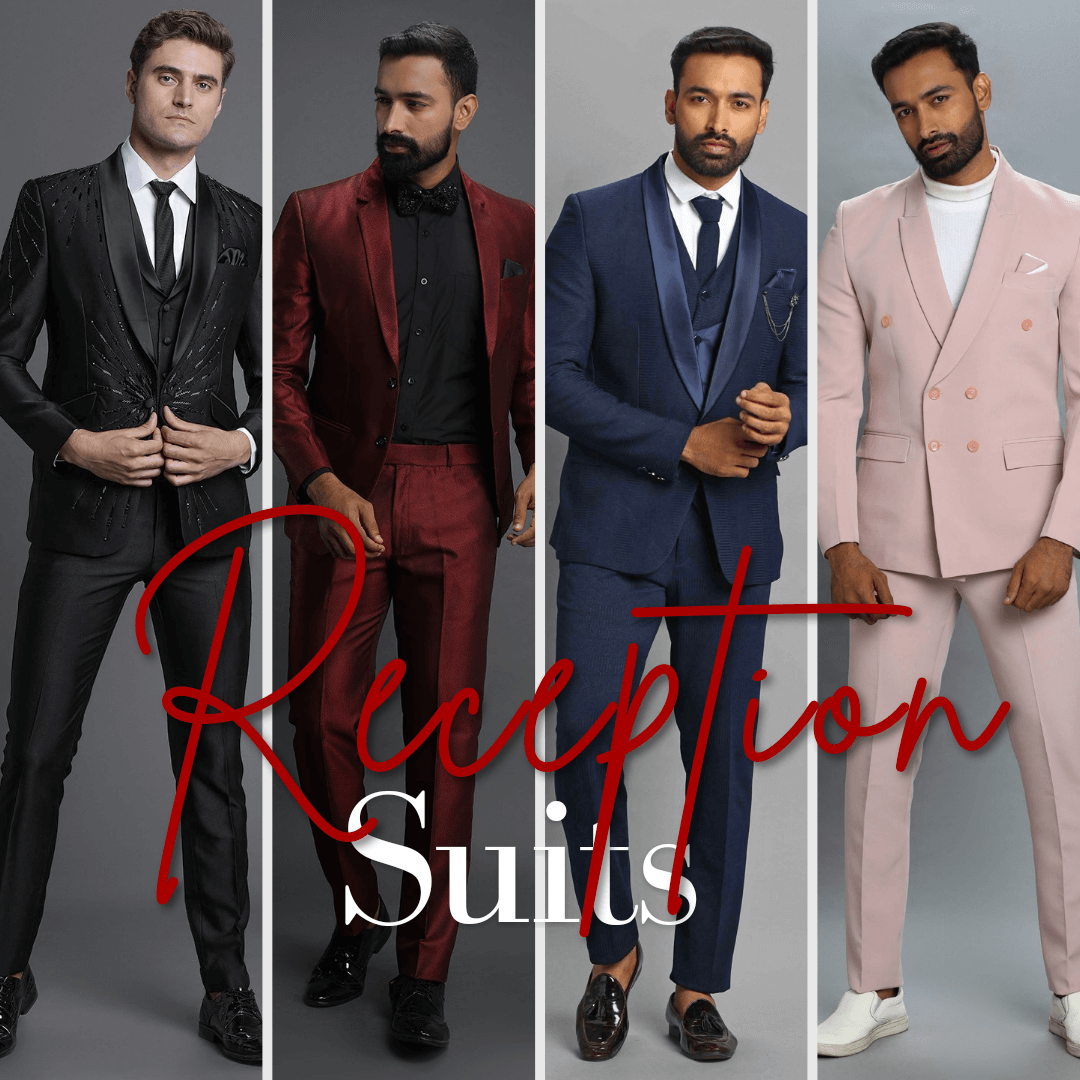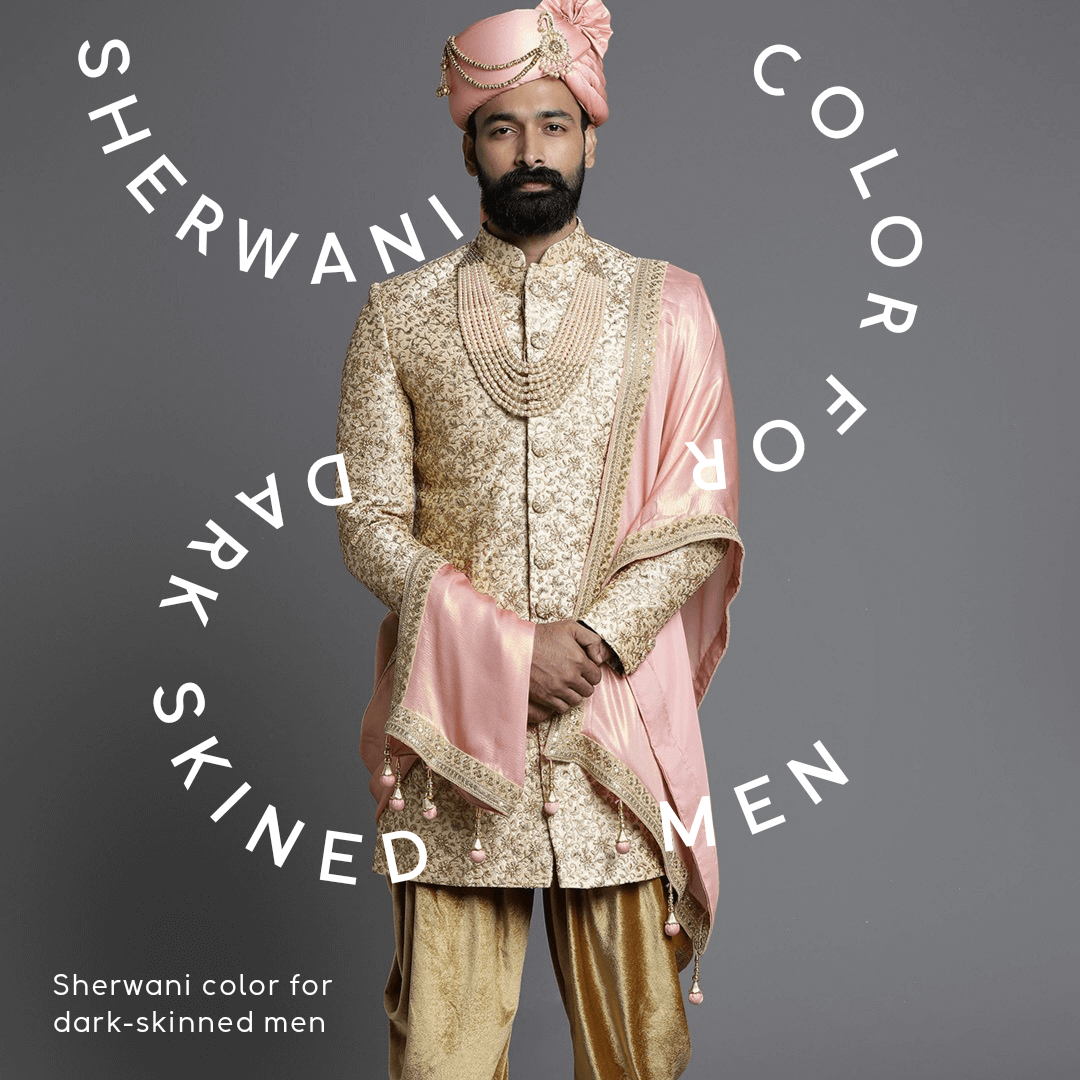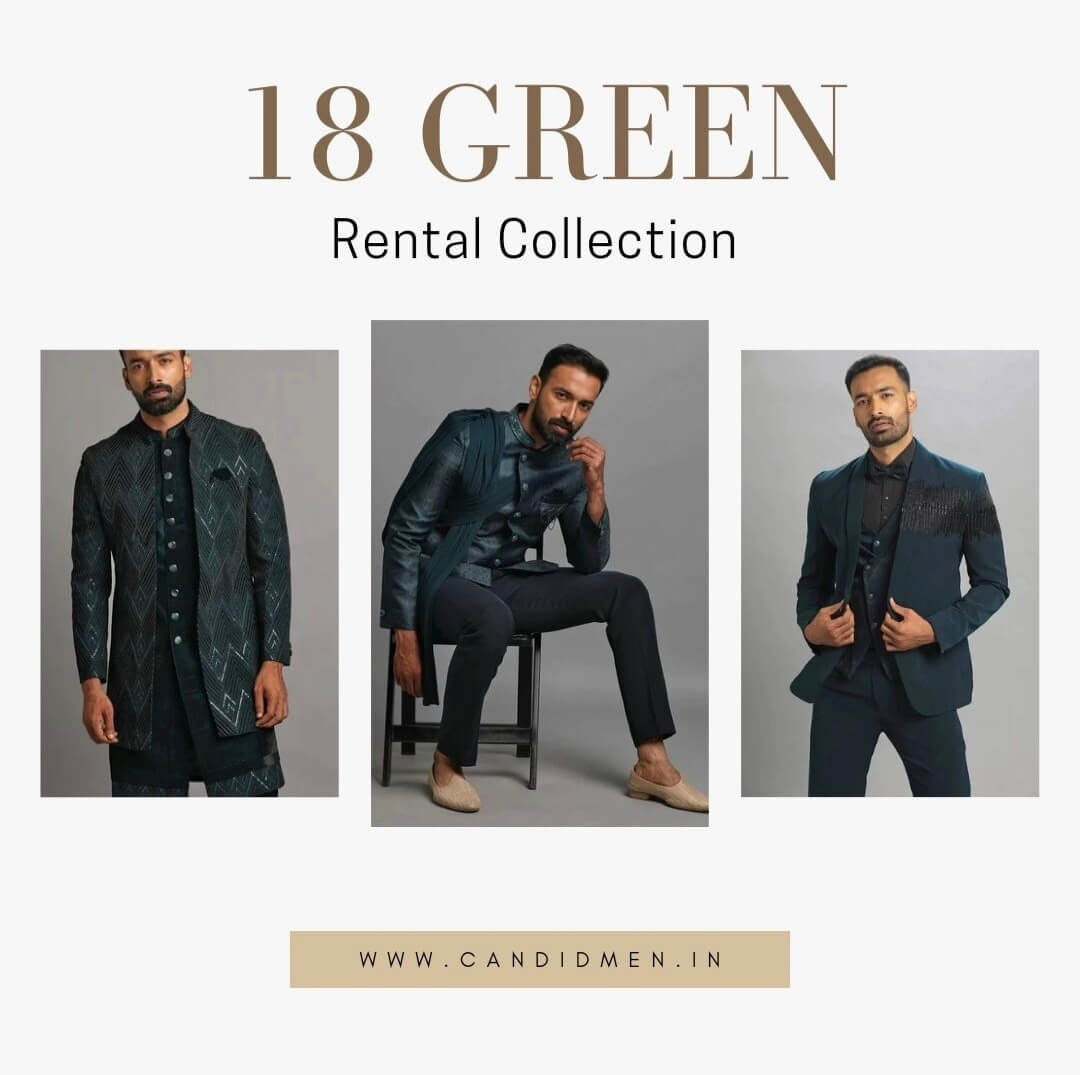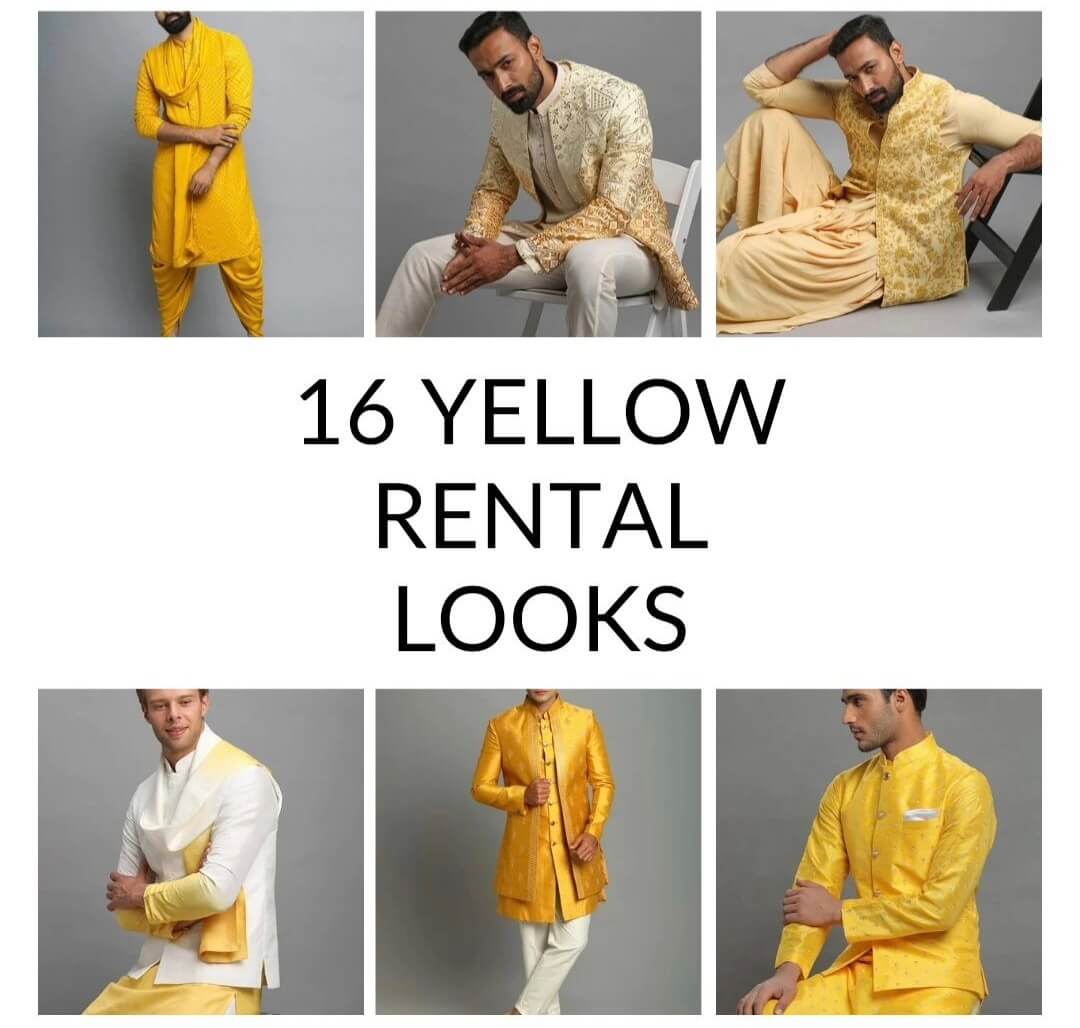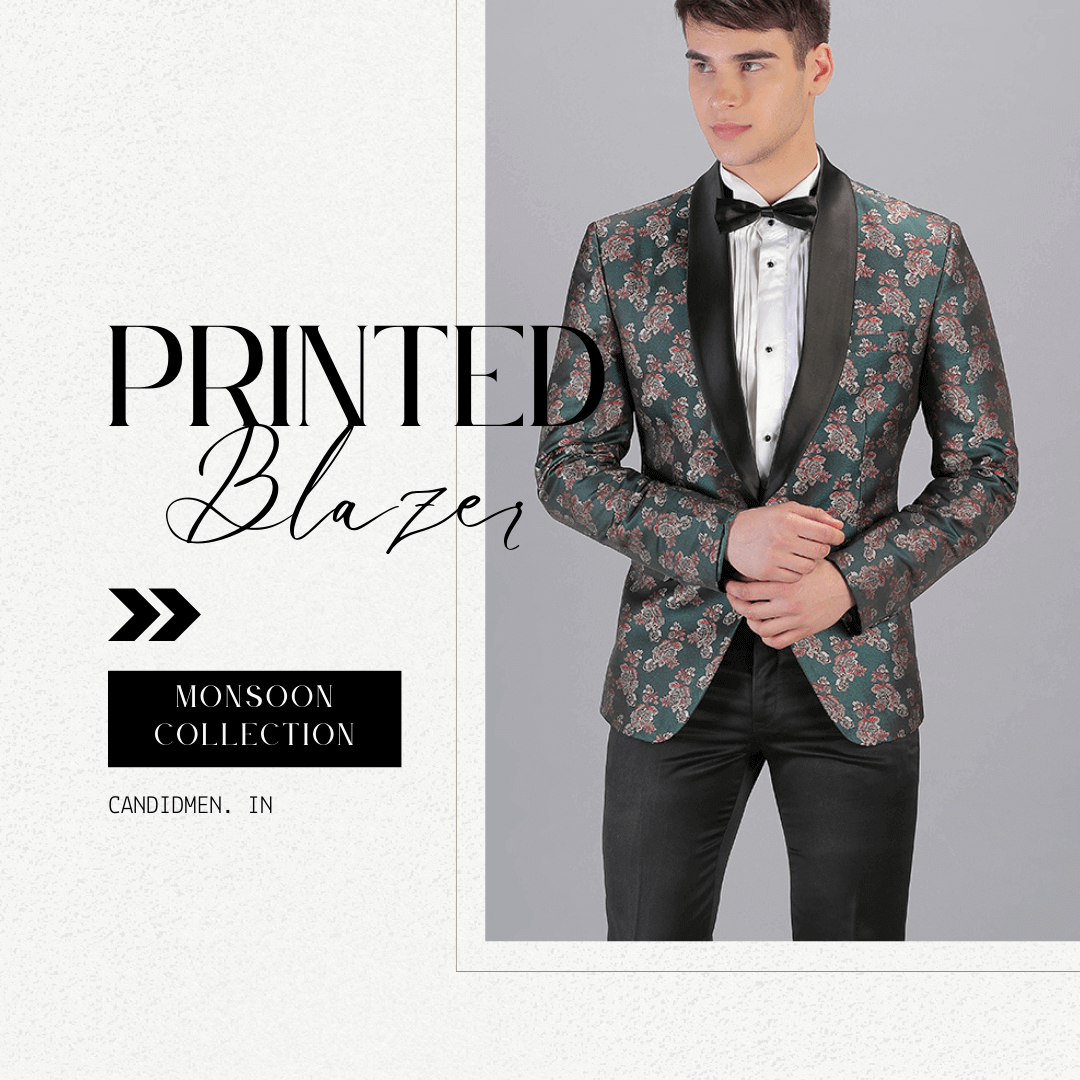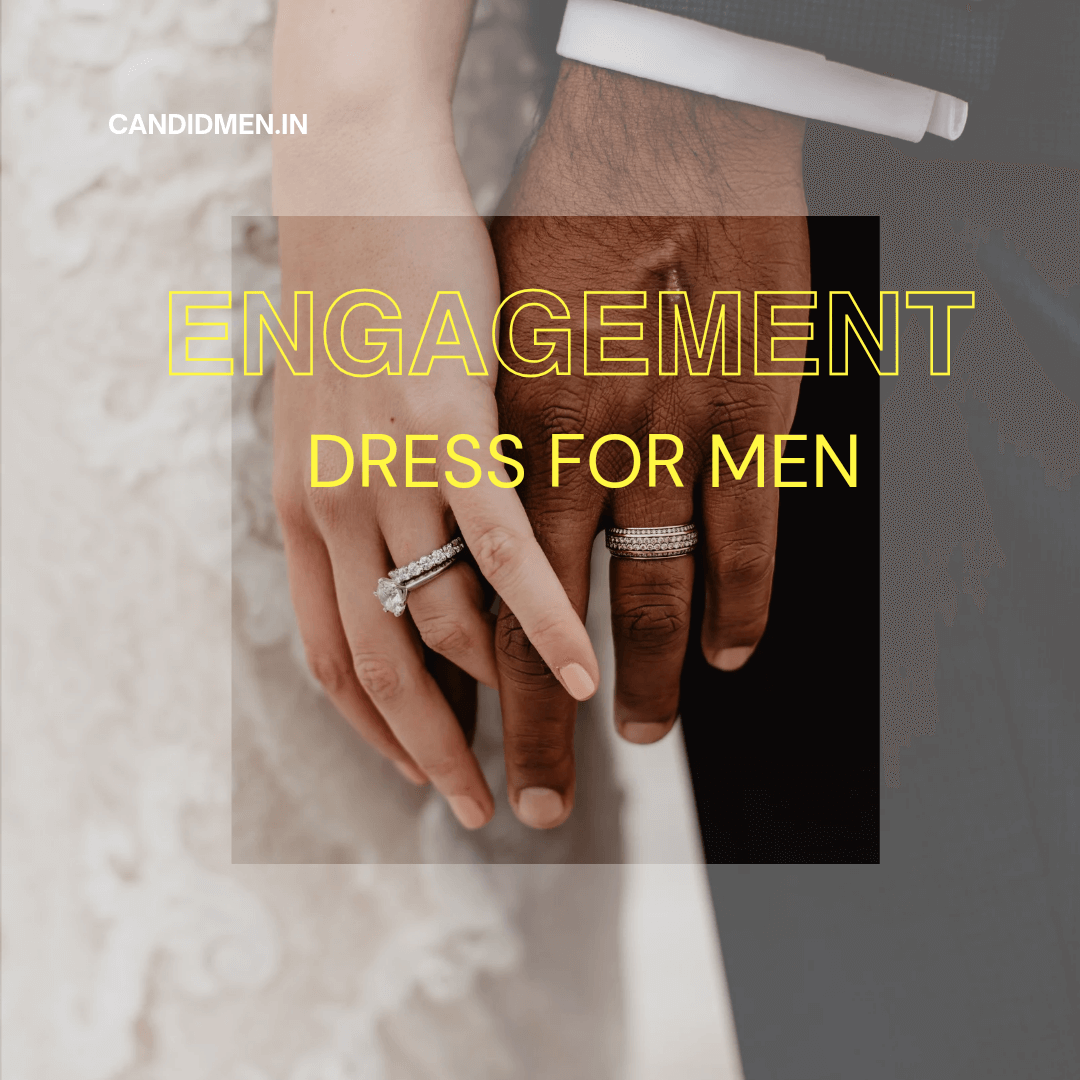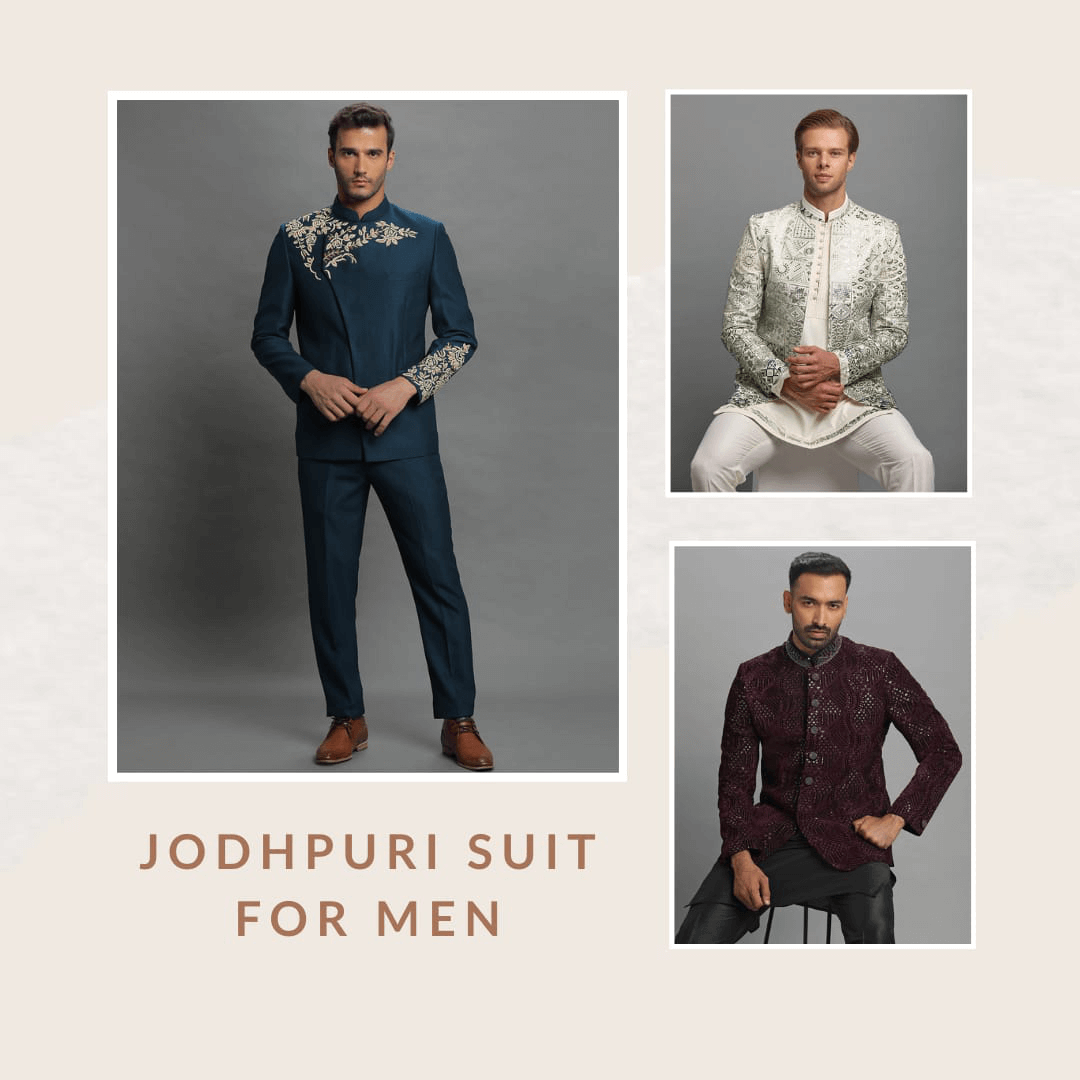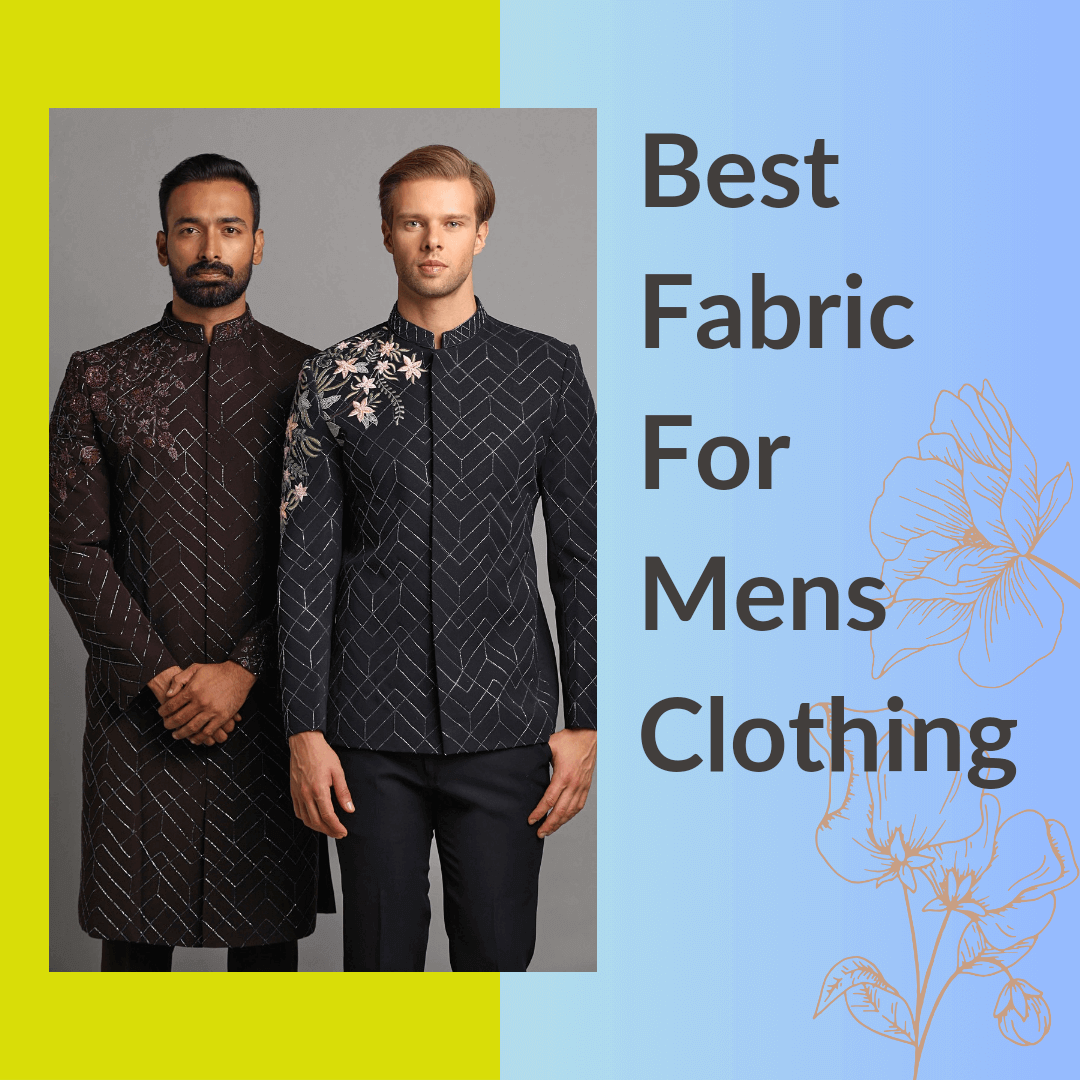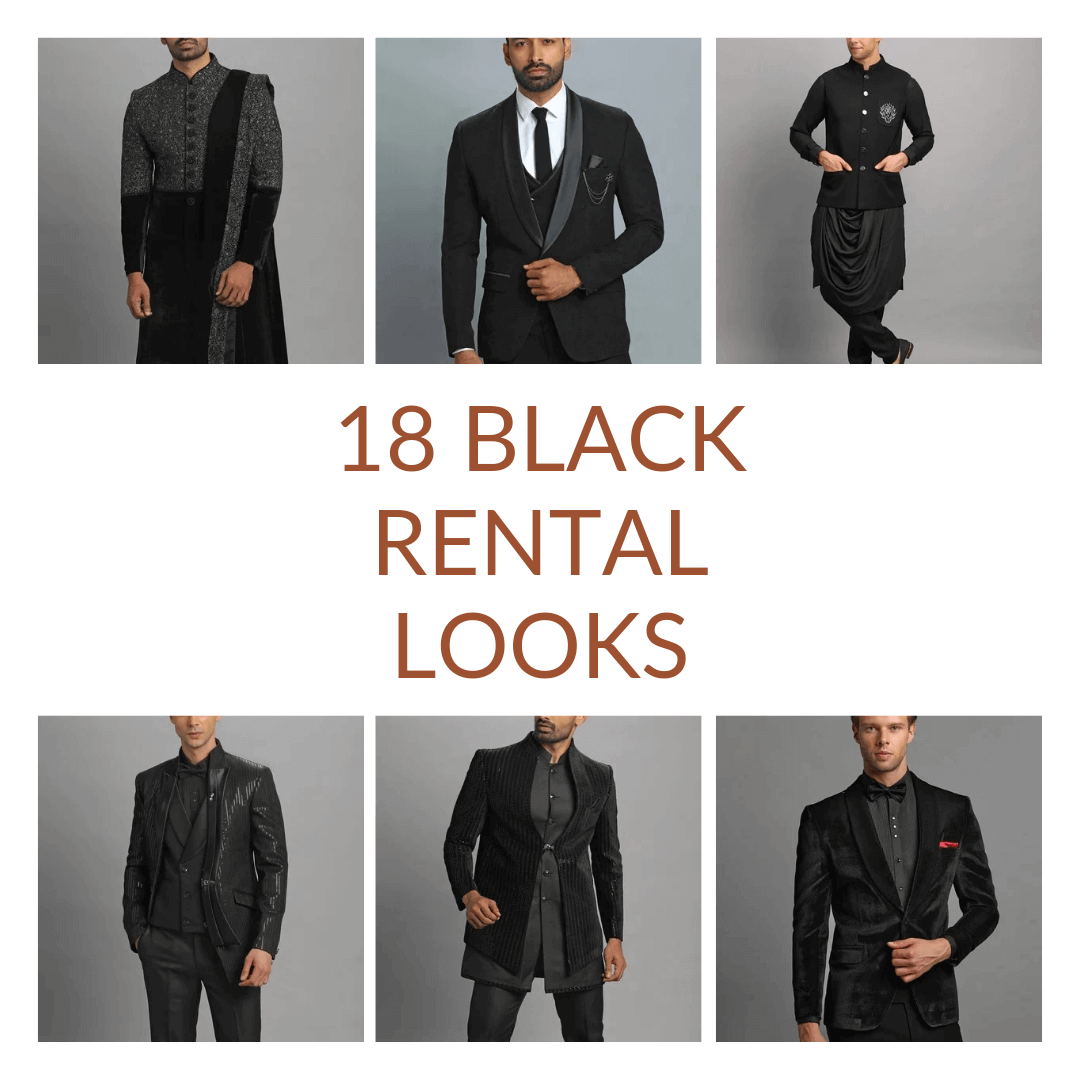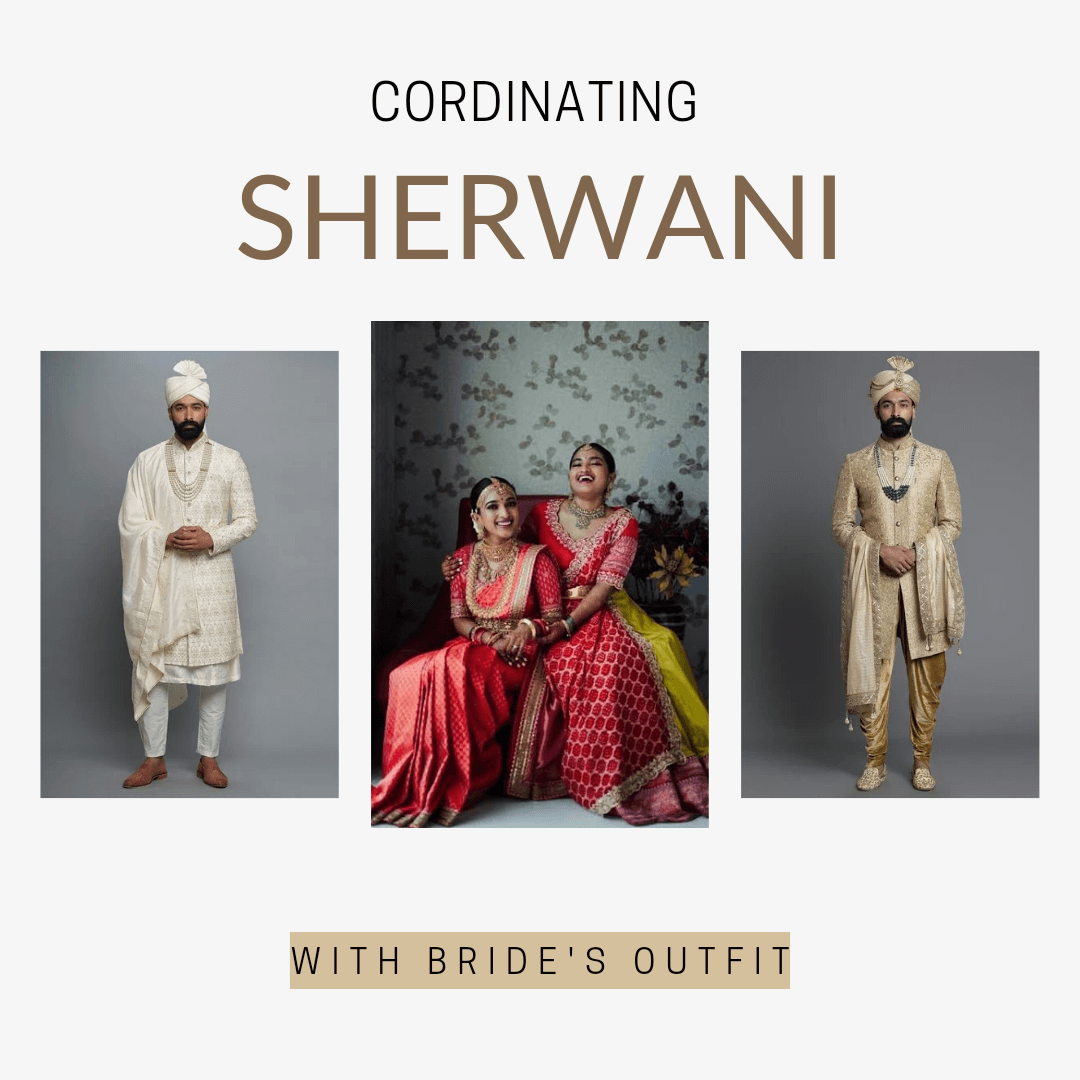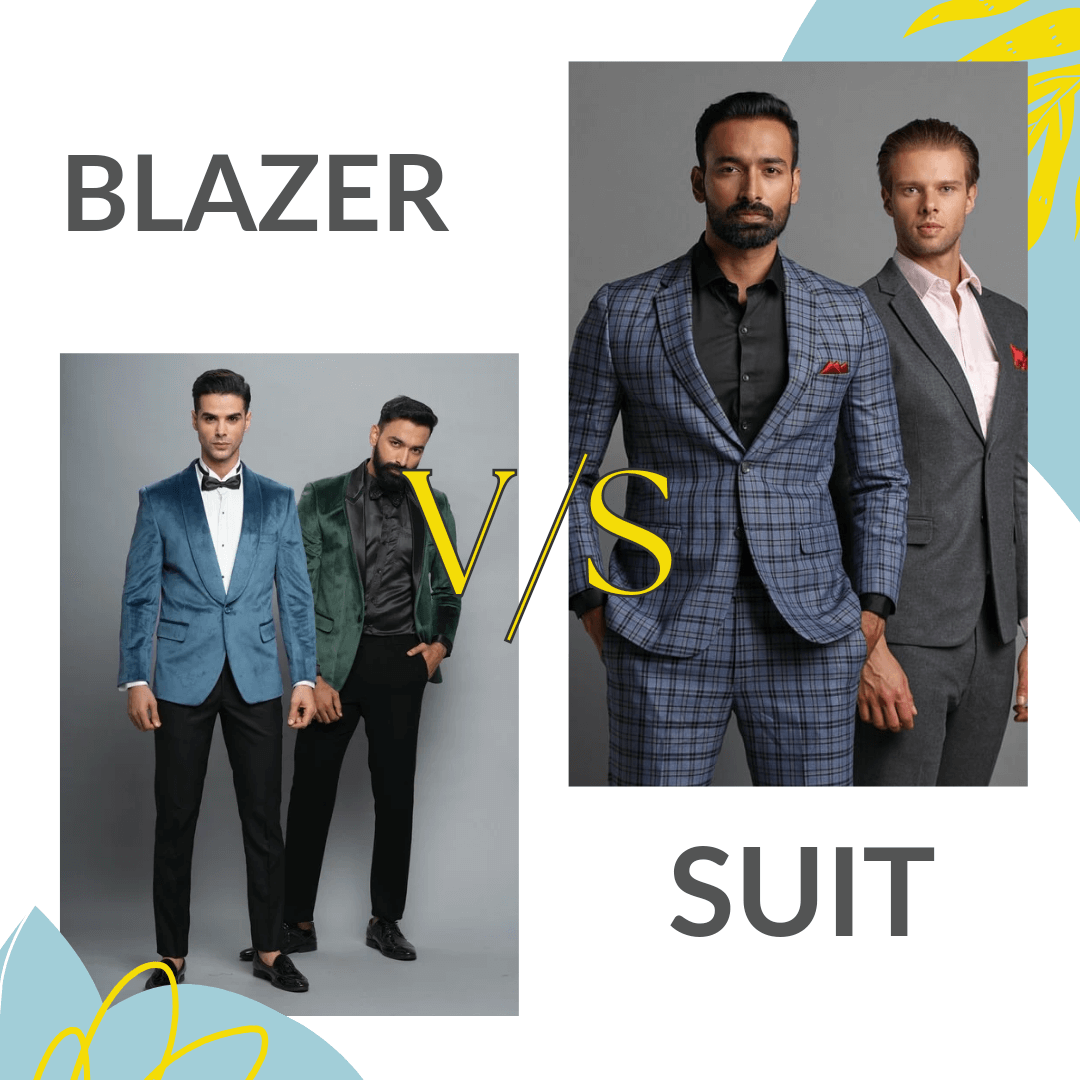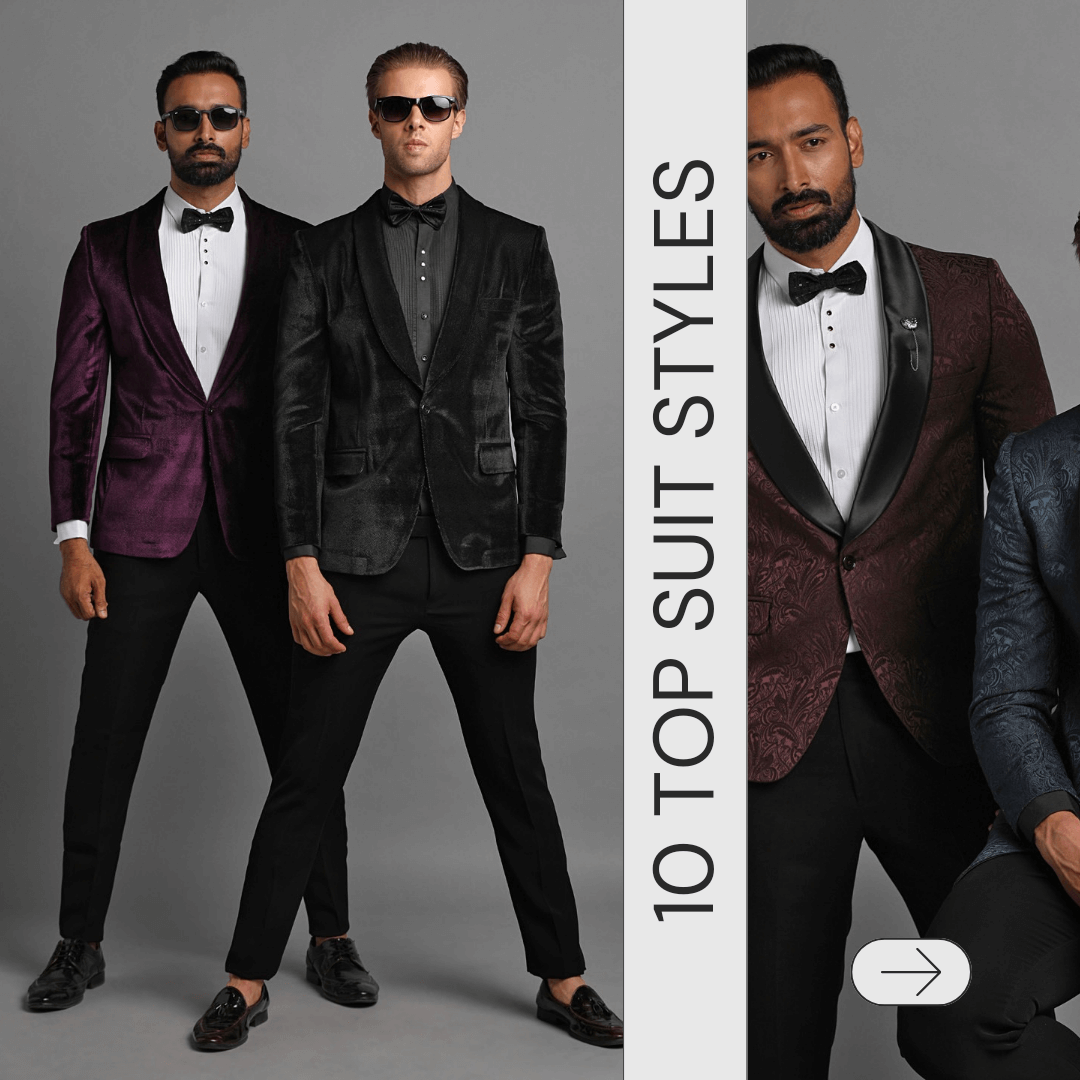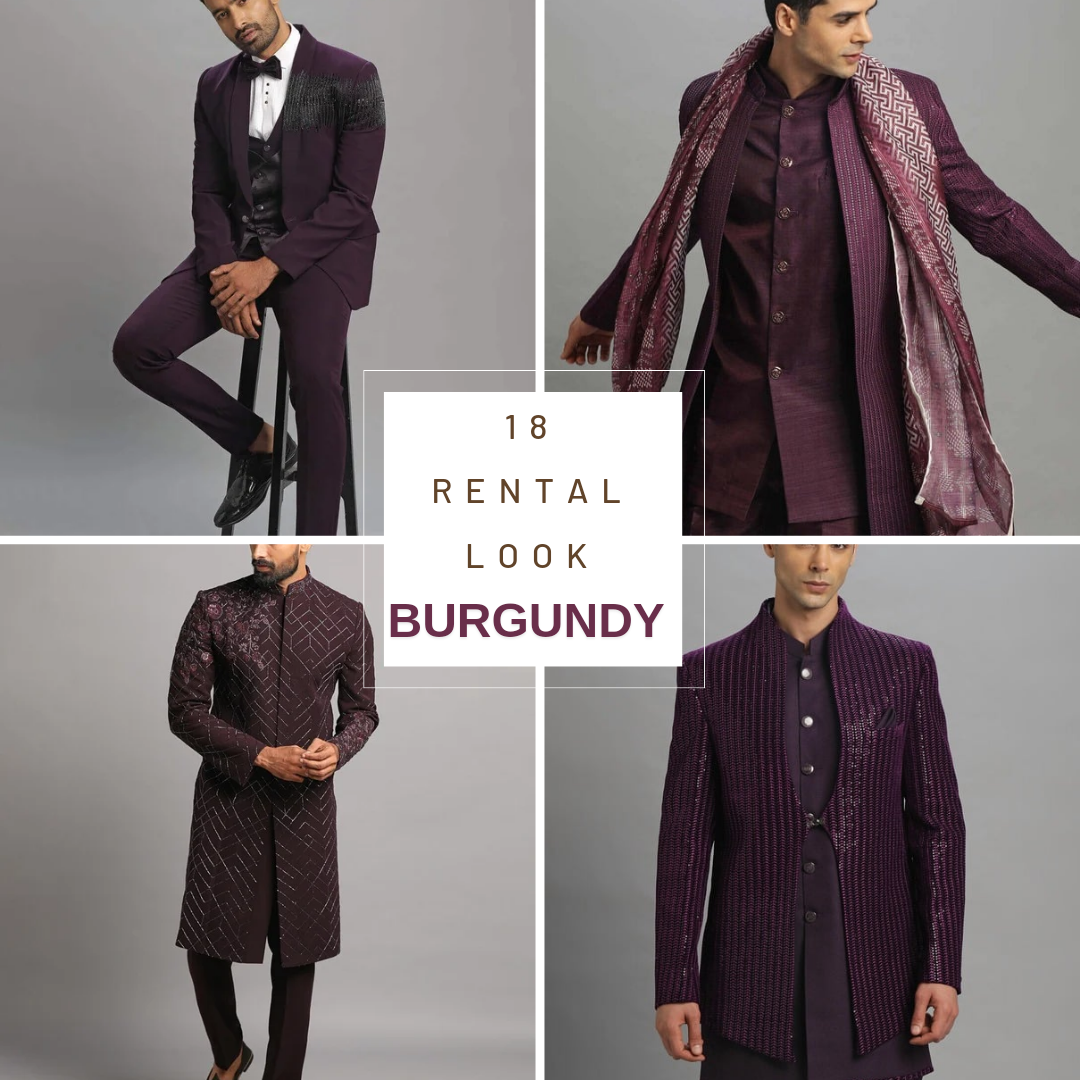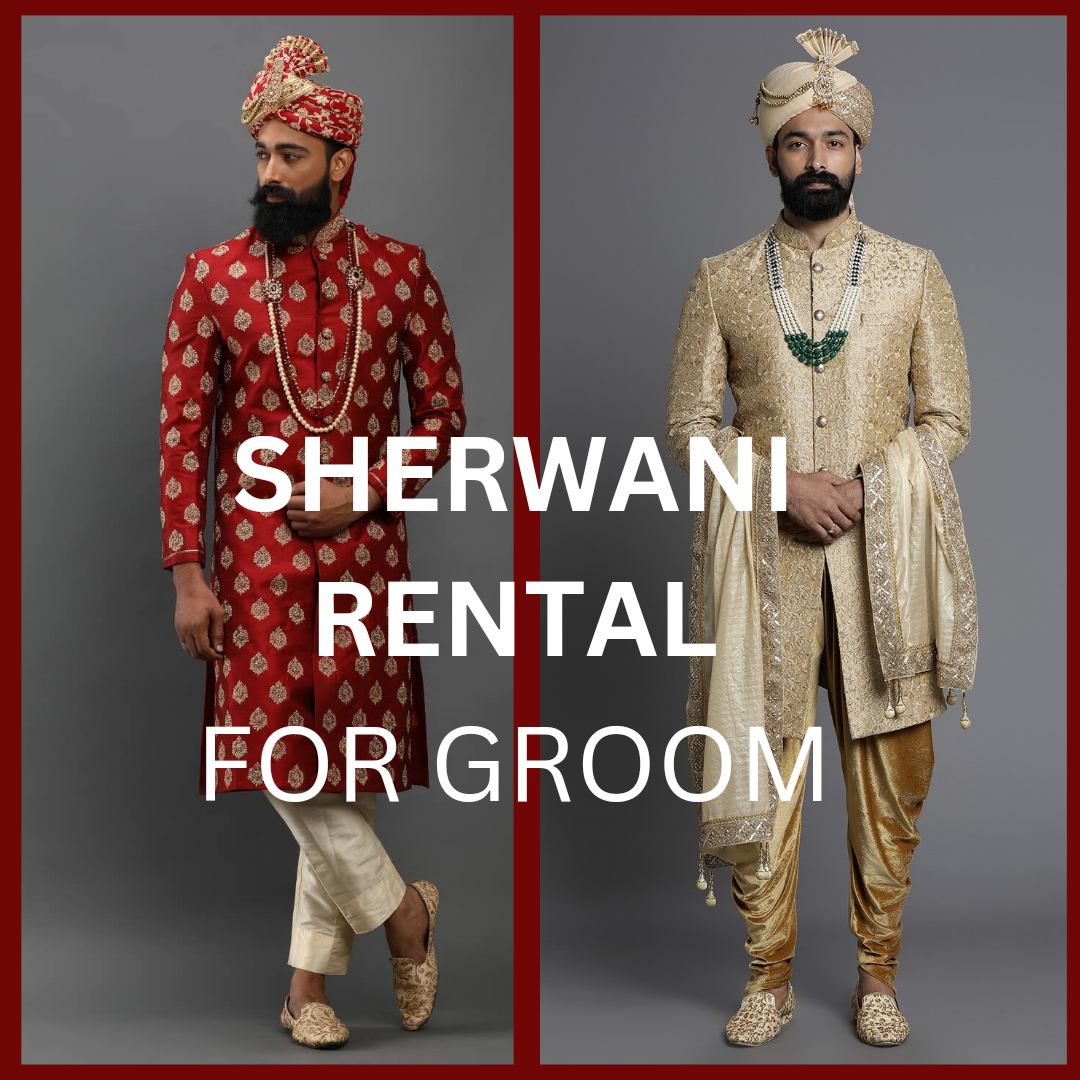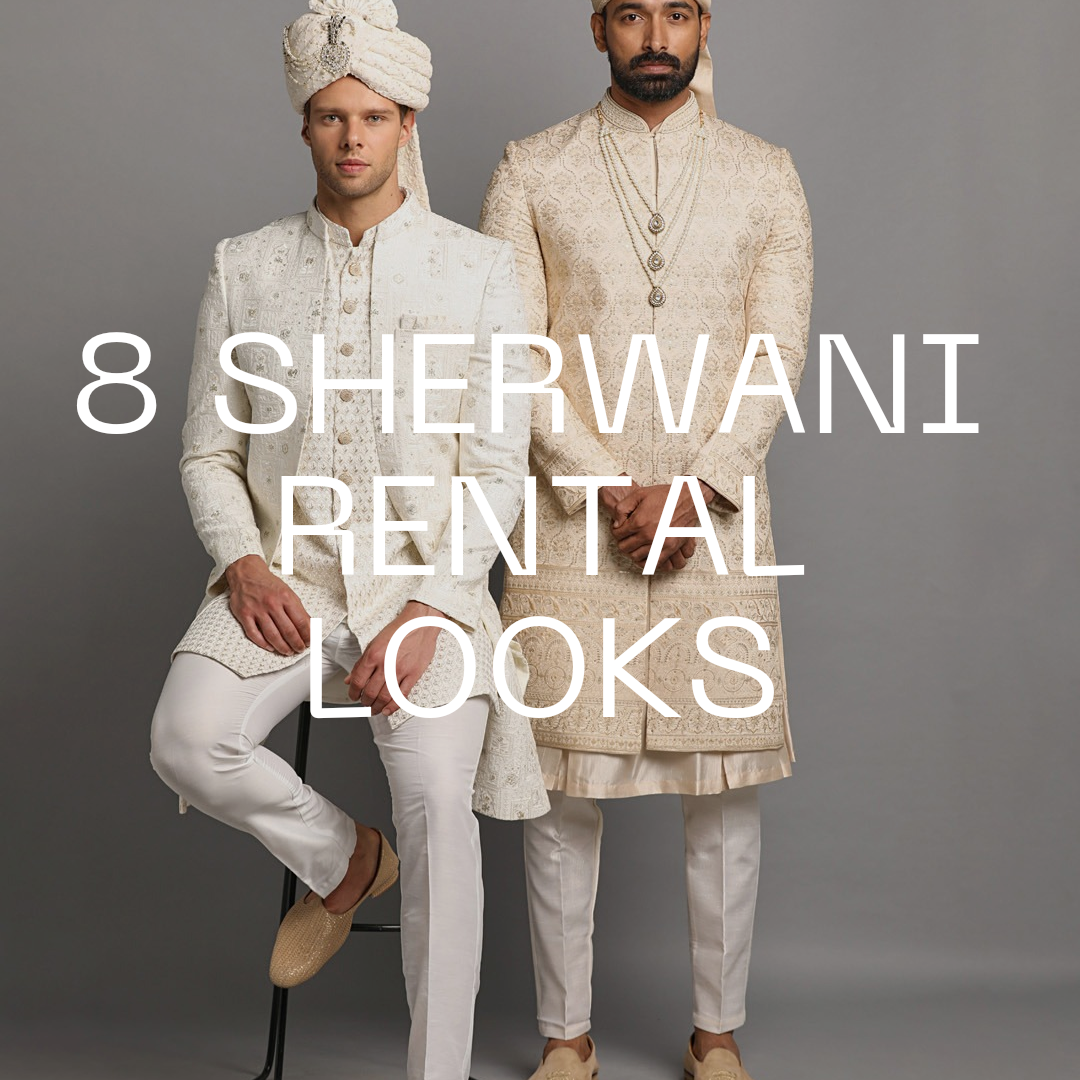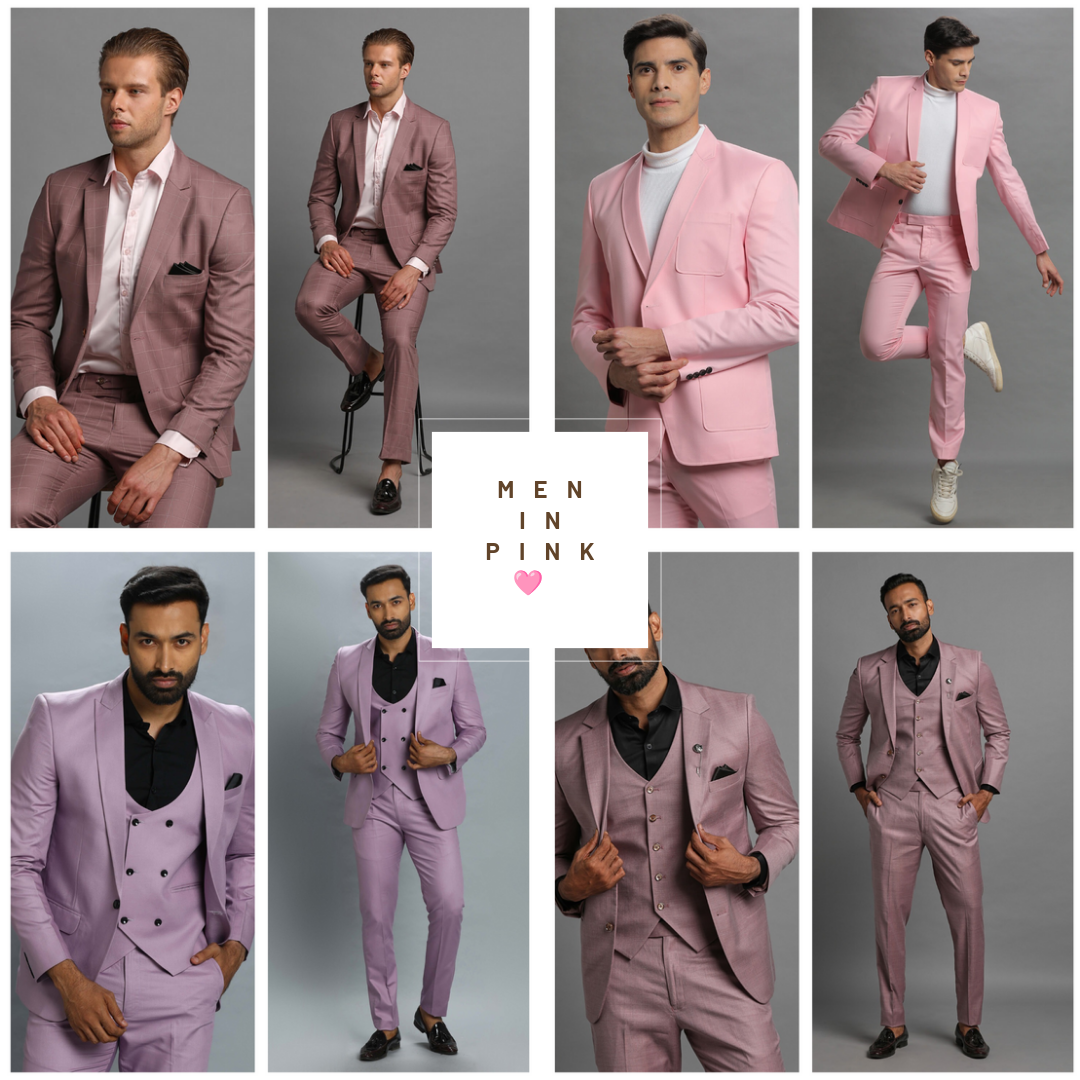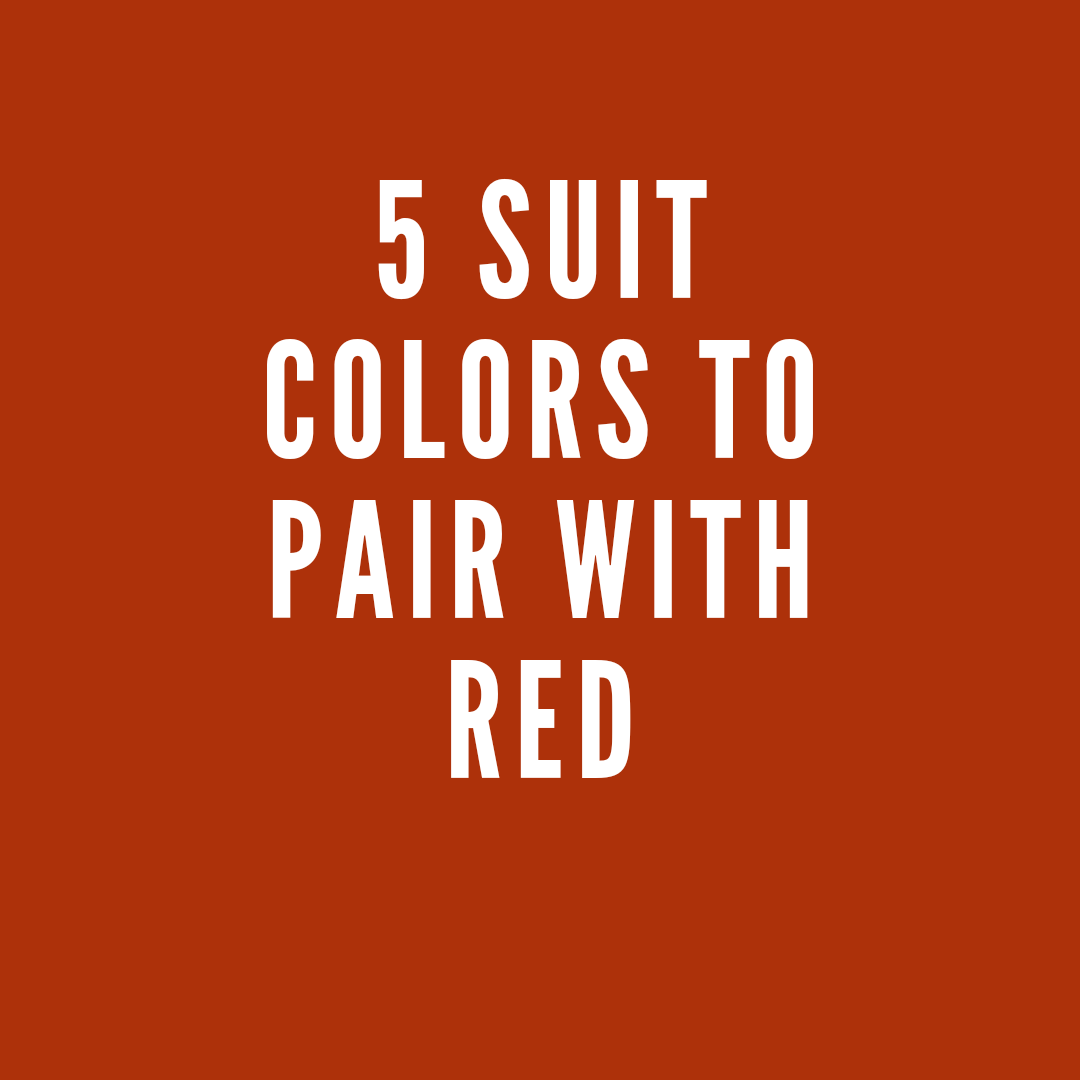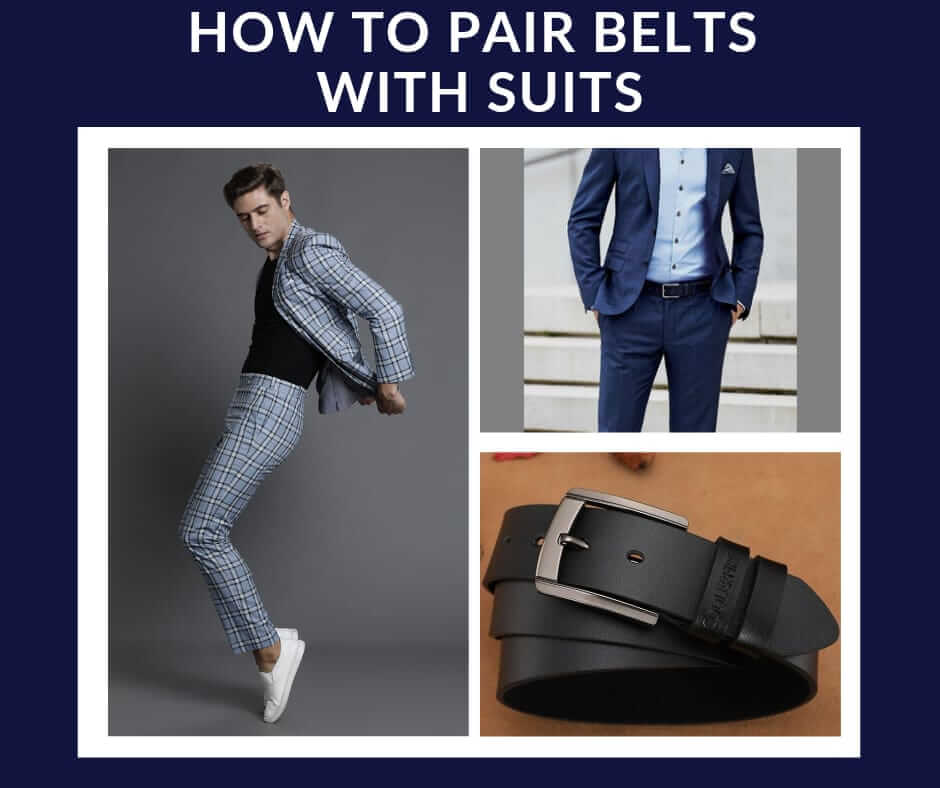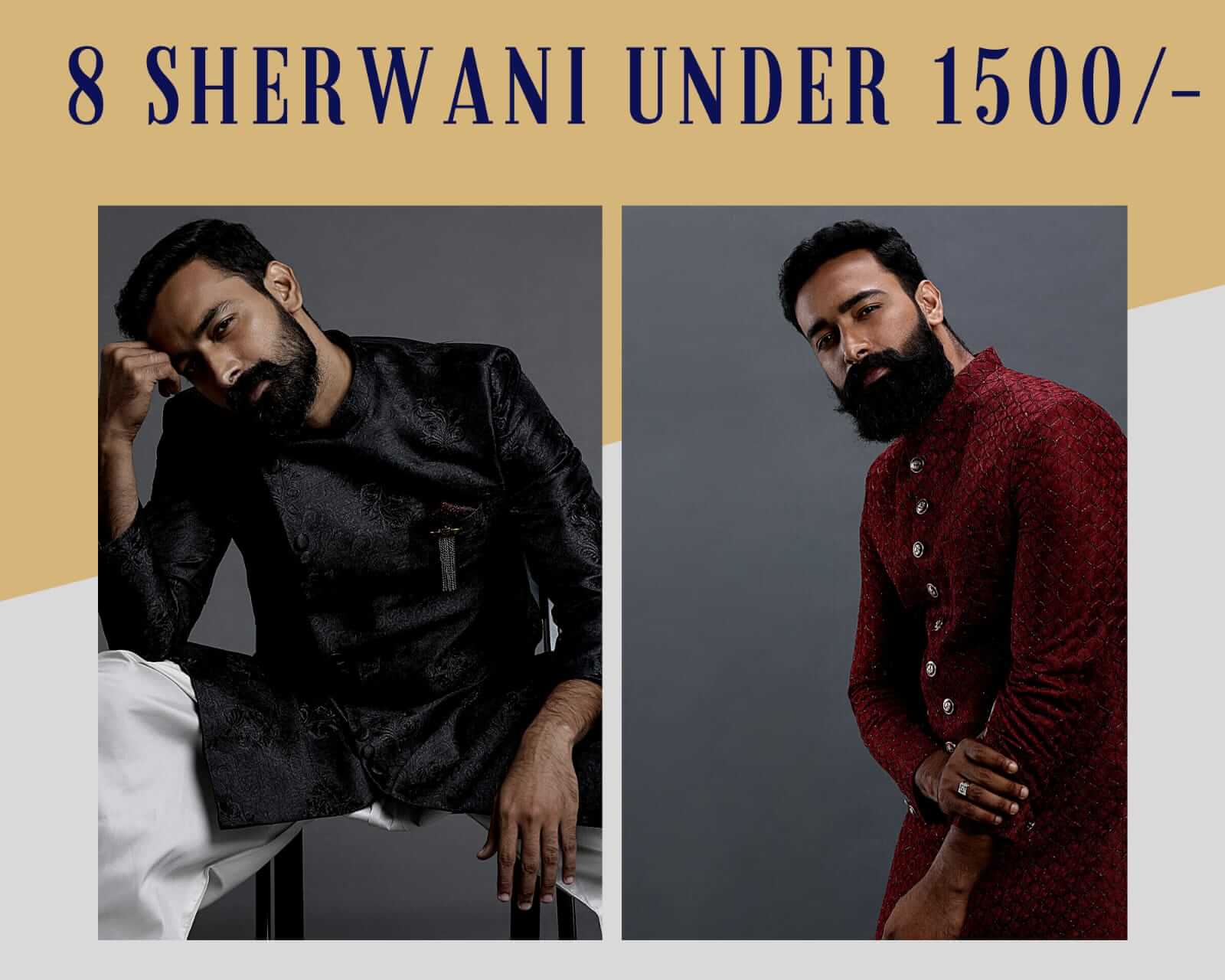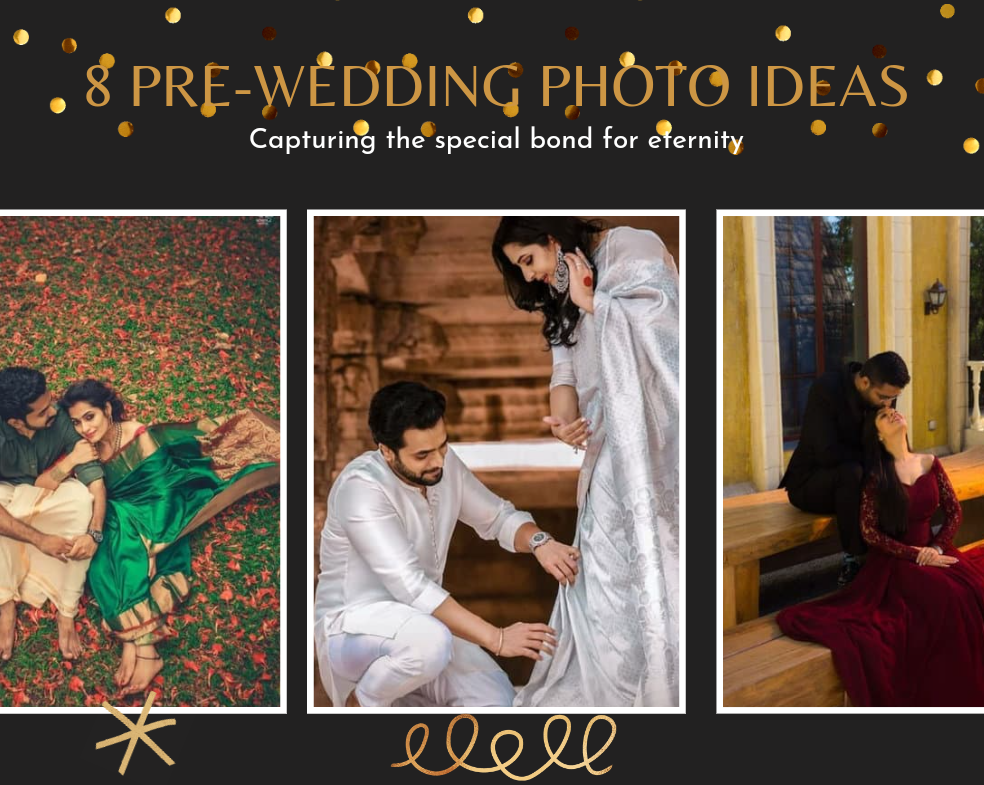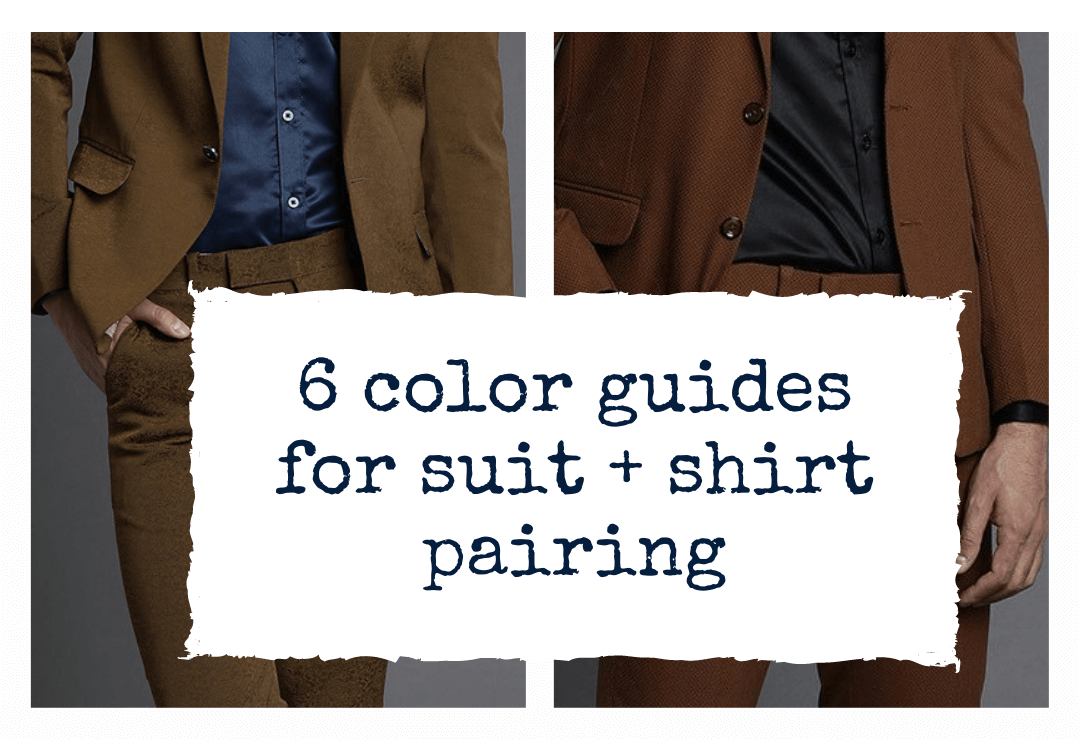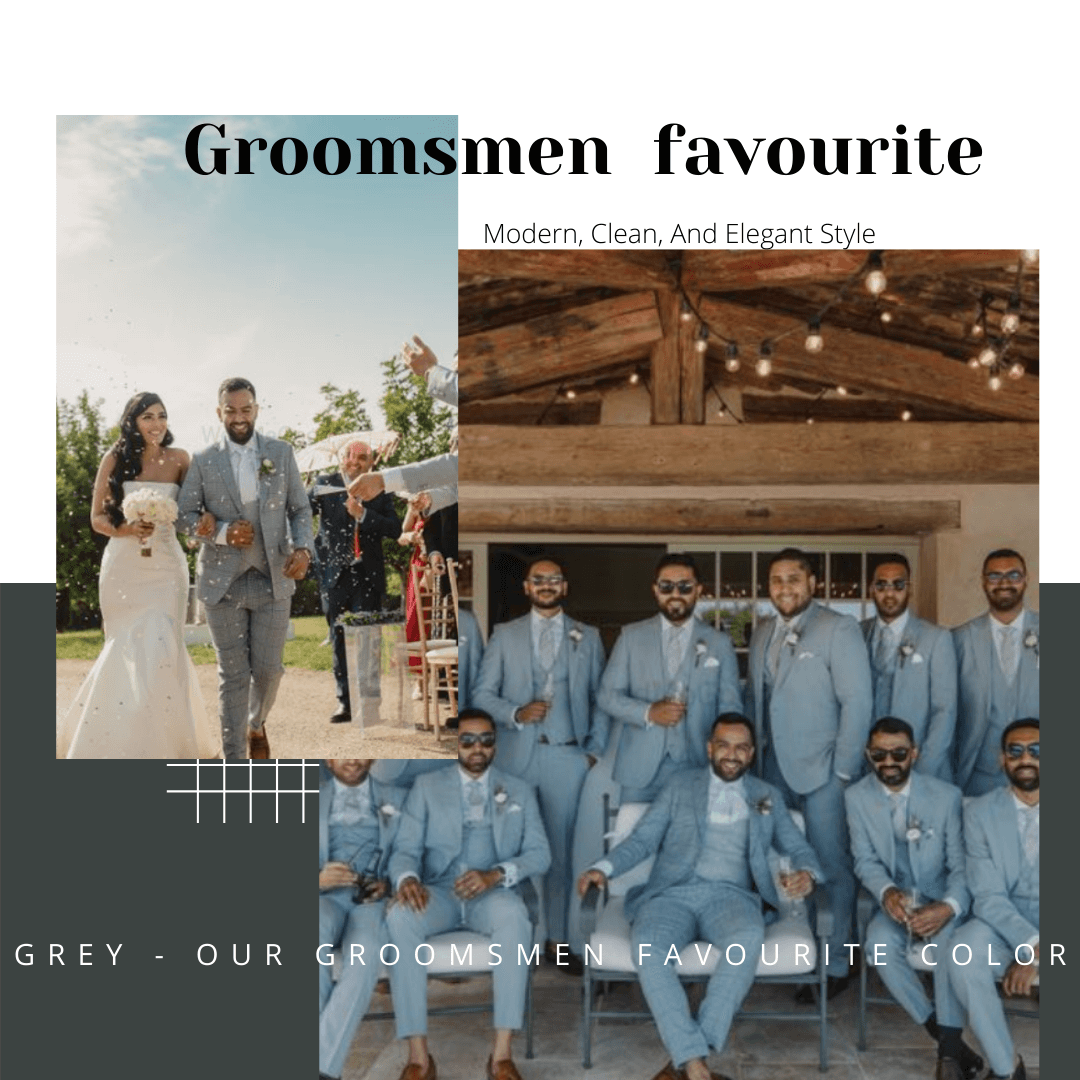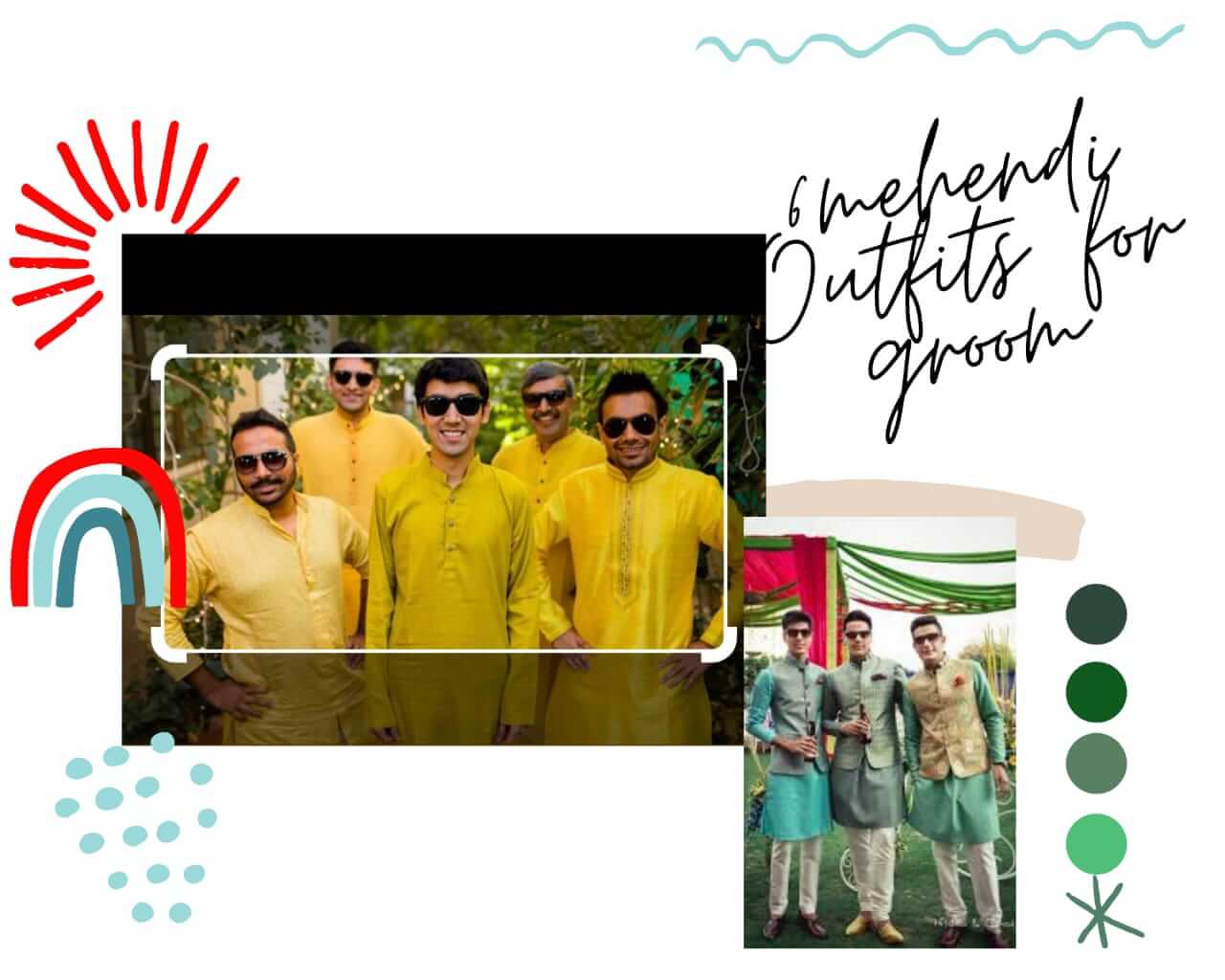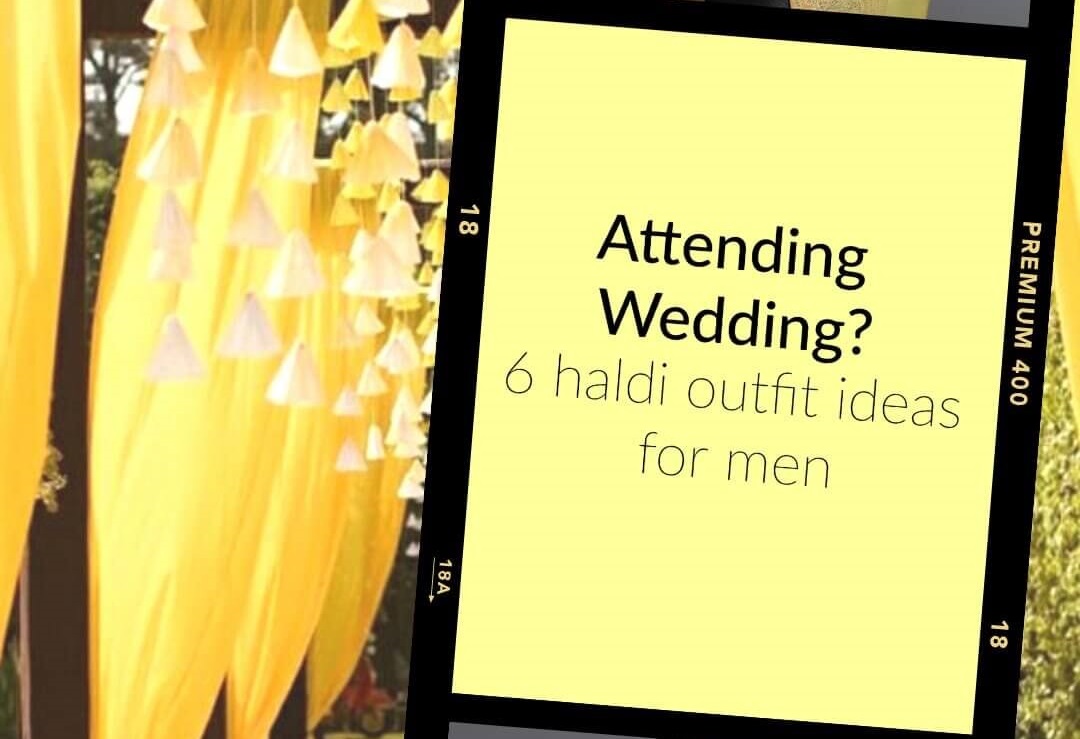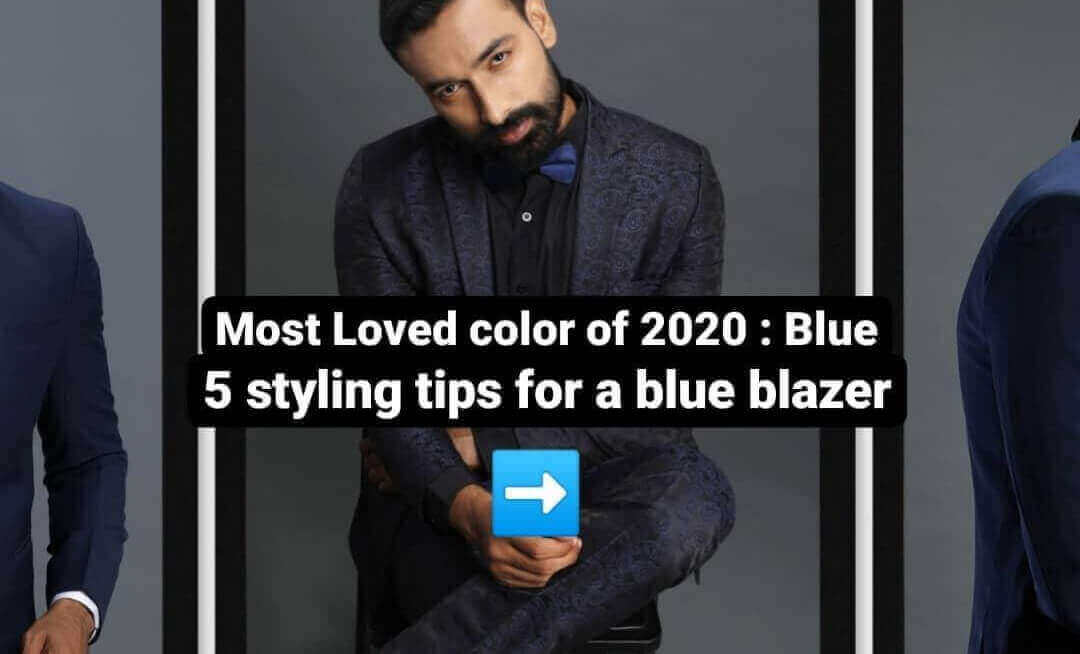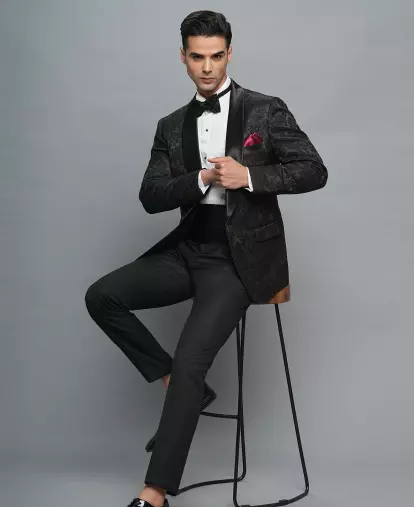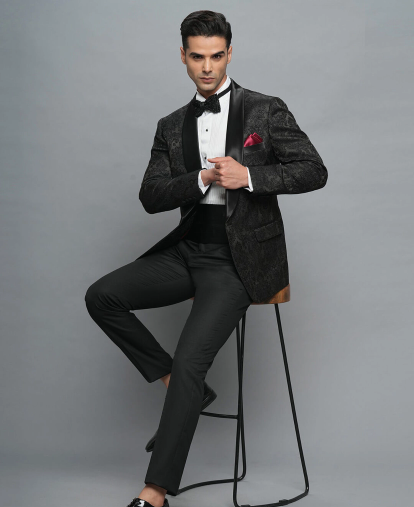 Back
Back

Best Fabric Choices for Muslim Weddings & Why Renting Makes More Sense
Selecting Appropriate Fabrics for the Occasion and Seasons
Muslim weddings blend tradition and fashion, and the fabric a bride or groom chooses has a big impact on how they dress. These outfits often have soft fabrics and fancy drapes. Cotton-silks are soft so they're great for summer weddings. The groom can stay cool during Nikah, Haldi, and Walima by wearing these clothes. Cotton is suitable for day and night events because it doesn't look heavy and keeps the fabric and texture comfortable.
When made of silk or velvet, sherwanis, bandhgalas, and layered Indo-Western clothes look royal inside or when it's cool outside. Silk smooths the skin and keeps its shine for a long time, while velvet adds depth to darker colours like deep green, blue, or maroon. Layered outfits look beautiful all day since these fabrics hold their shapes well. People often use net and organza for jacket overlays and sleeves because they offer texture without making the jacket heavier.
However, grooms who want their draped kurtas or Achkans to appear silky and smooth would love satin combinations. The fabric doesn't wrinkle, and it is perfect for nighttime weddings. Winter weddings may be appropriate for wool and it will keep you warm without requiring additional clothing.
Frequent Fabric Selections for Brides
Brides also seek materials like chiffon, georgette, or raw silk for their lengthy gowns or lehengas. These materials are flexible, easily accommodate zari or resham embroidery, and can be worn for extended ceremonies. Raw silk is preferred by many brides who like a structured style without being stiff, since it provides texture without being heavy.
Combined with thread work or sequins, chiffon and georgette look their best and produce a shimmering appearance in low light. Net fabric is frequently used in veils or dupattas to encircle the bride's ensemble softly. Brides prefer garments that shine in photos without seeming overly glossy, even in minimalist backgrounds. For this reason, satin organza or delicate silk are preferable options to starchy or heavy jacquard.
When worn over simpler base layers like linen or cotton kurtas, groom's ensembles can look great with structured waistcoats or Nehru jackets made of jacquard or banarasi cloth. For outdoor celebrations or afternoon Nikah in warm cities, airy cotton bandhgalas or linen suits are more appropriate. These materials keep the groom looking fresh throughout events by absorbing perspiration and preventing heat buildup.
Why Renting Is a Better Option Than Buying
Wearing a different outfit for each ceremony can get expensive and wasteful because many Muslim weddings include back-to-back rites. In this context, renting makes more sense, particularly for ensembles composed of luxurious materials like velvet, jacquard, or thick silk. After the wedding, these would remain unused in the closet and unsuitable for everyday wear. By renting, the bride or groom can wear high-quality clothes without paying for them over time. For example, renting a velvet sherwani with zari embroidery can give you the same royal appearance for a fraction of the expense of a whole reception budget.
Taking care of clothes is another reason to rent. Even with careful storage and dry cleaning, expensive fabrics can lose their shine with time. Rented clothes are pre-cleaned and ironed, and often look younger because they are taken care of well between uses. Wedding rentals usually come with fabric options that match the theme and the season.
A groom can choose structured velvet for the Walima, soft silk for the Nikah, and linen for the Haldi without buying anything. The bride can switch between light georgette, organza overlays, and raw silk without worrying about matching jewellery or putting her garments away. Rentals often come with matching stoles, turbans, or dupattas of similar fabrics, ensuring you look good without planning anything else.
Comfortable Fabric Selections Based on Events
Wearing clothes tailored to a specific function also helps prevent discomfort. For example, unless combined with breathable fibres, silk can feel stuffy in humid weather despite its opulent appearance. Rich-looking yet still wearable hybrid textiles, including light jacquards or blends of polysilk, are frequently offered by rental services. By making these decisions, you may maintain a consistent appearance during events without wearing bulky clothing for extended periods.
Additionally, rentals provide high-end and uncommon textiles that are difficult to buy without special requests. Although purchasing Banarasi tissue fabric or brocade with Mughal influences might not be feasible, these options are frequently found in well-curated rental catalogues. Bridal rentals often feature fabrics that work well with traditional embroidery styles, such as threadwork on net or zardozi on raw silk, which saves time when looking for the ideal base material.
In basic weddings, fabric choice is still vital when focusing on feelings and atmosphere rather than overpowering visuals. You may keep the event classy without overdressing by hiring clothes made of crisp, matte-finish materials like cotton, silk, or georgette. The fabric should also be flexible enough for standing, sitting, and praying, since Muslim weddings often include religious and family rituals.
Conclusion
By renting the appropriate fabric, you can ensure every outfit feels unique without worrying about storage or money. Muslim marriages prioritise grace, humility, and beauty. Each component is enhanced by the appropriate fabric, and rental guarantees that this beauty remains practical, flexible, and stress-free.


